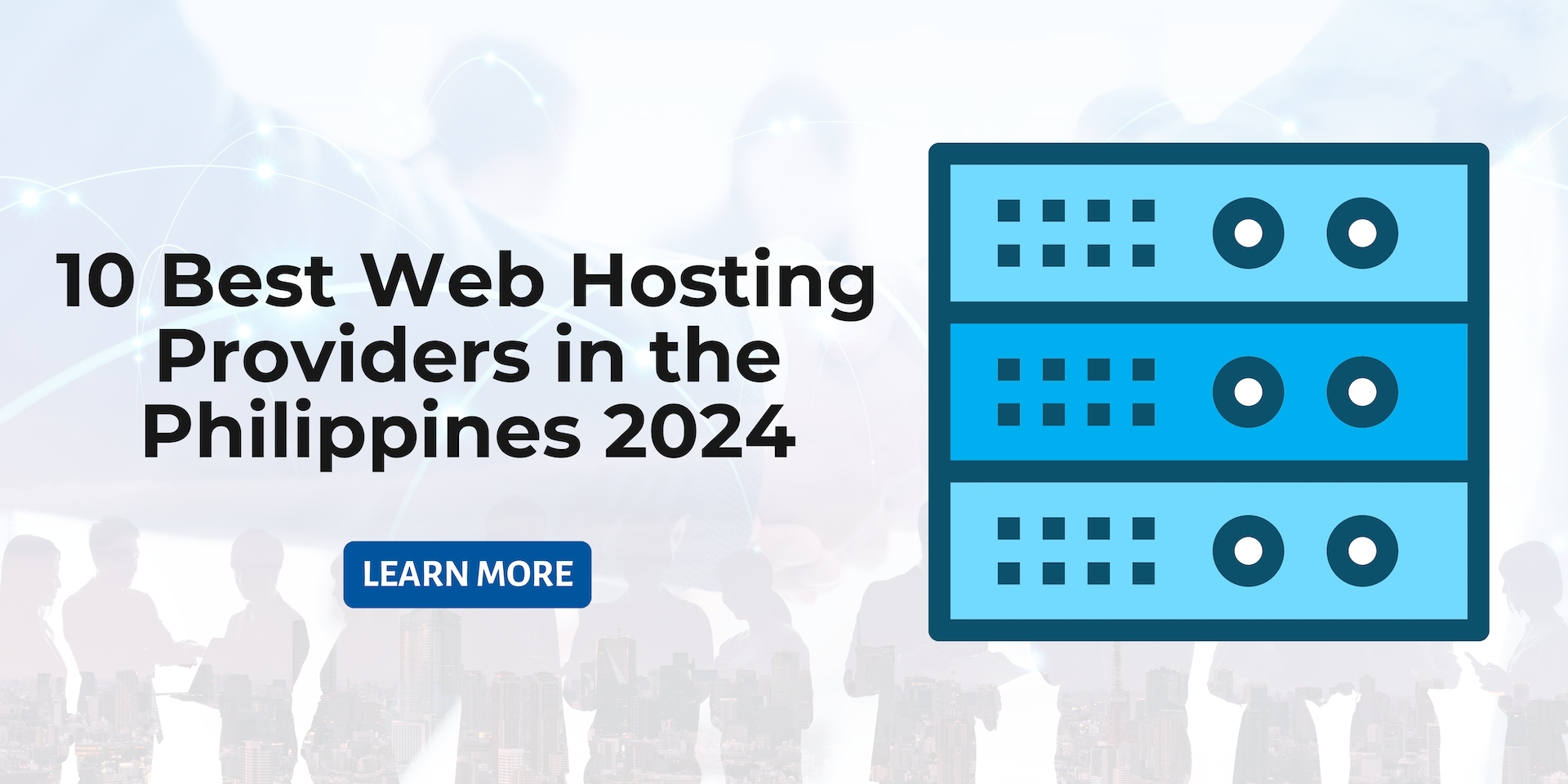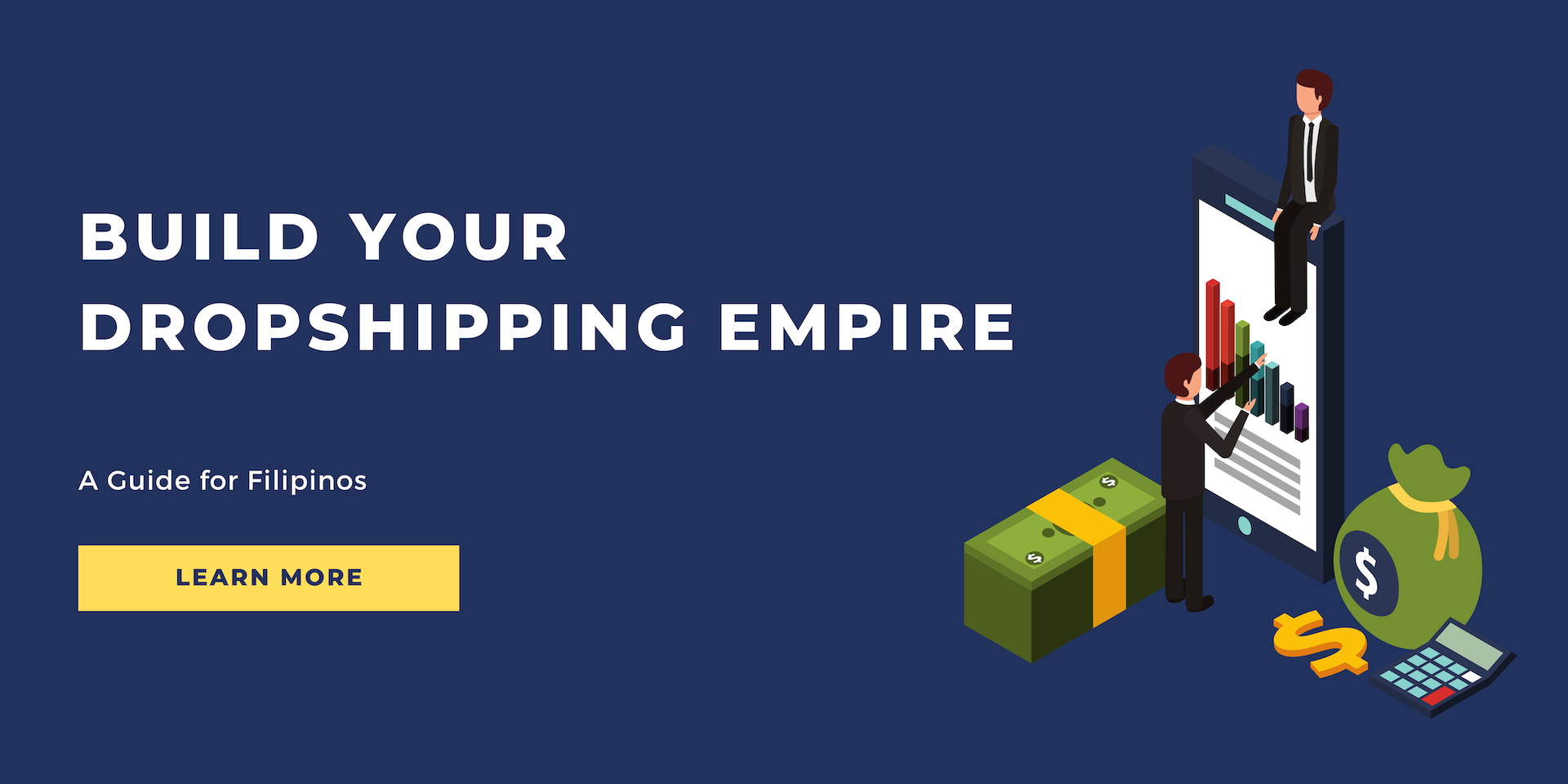Dropshipping in the Philippines: how to start quickly – Z.com
If you’ve been thinking about starting your own online business in the Philippines for a while now, then you must have heard about dropshipping before. After all, it’s one of the best ways to earn money online<.
But what is the business of dropshipping all about? What do you need to get started? What products should you sell?
This guide is designed to help you start your own dropshipping business in the Philippines and answer frequently asked questions like the ones mentioned above and more.
Table of Contents:
- How does dropshipping work?
- What are the advantages and disadvantages of running a dropshipping business in the Philippines?
- How much money can you possibly make from dropshipping?
- What are the most profitable dropshipping niches for 2021?
- What to look for when researching niche markets?
- What tools can you use to find a profitable dropshipping niche?
- Google Keyword Planner
- Google Trends
- Facebook Potential Audiences (Business Suite Insights)
- Where can you source your products?
- Where can you sell your dropshipping products?
- Dropshipping on Shopify
- Dropshipping on WooCommerce
- Dropshipping on Lazada and Shopee
- Dropshipping on Facebook
- How to drive traffic to your dropshipping store?
- Research Related Keywords and Phrases
- Create Good Metadata
- Build Backlinks
- Share Social Videos to Drive Traffic and Engagement
- Create a Quality Content Marketing Strategy
- Google Ads
- How to register your dropshipping business with the Bureau of Internal Revenue?
- What are the standard taxes you need to pay for your dropshipping business?
- How much capital do you need to start a dropshipping business in the Philippines?
- Is dropshipping still profitable in the Philippines?
- Can you start a dropshipping business without a website?
- Do you need to pay taxes while dropshipping?
Chapter 1: What is dropshipping?
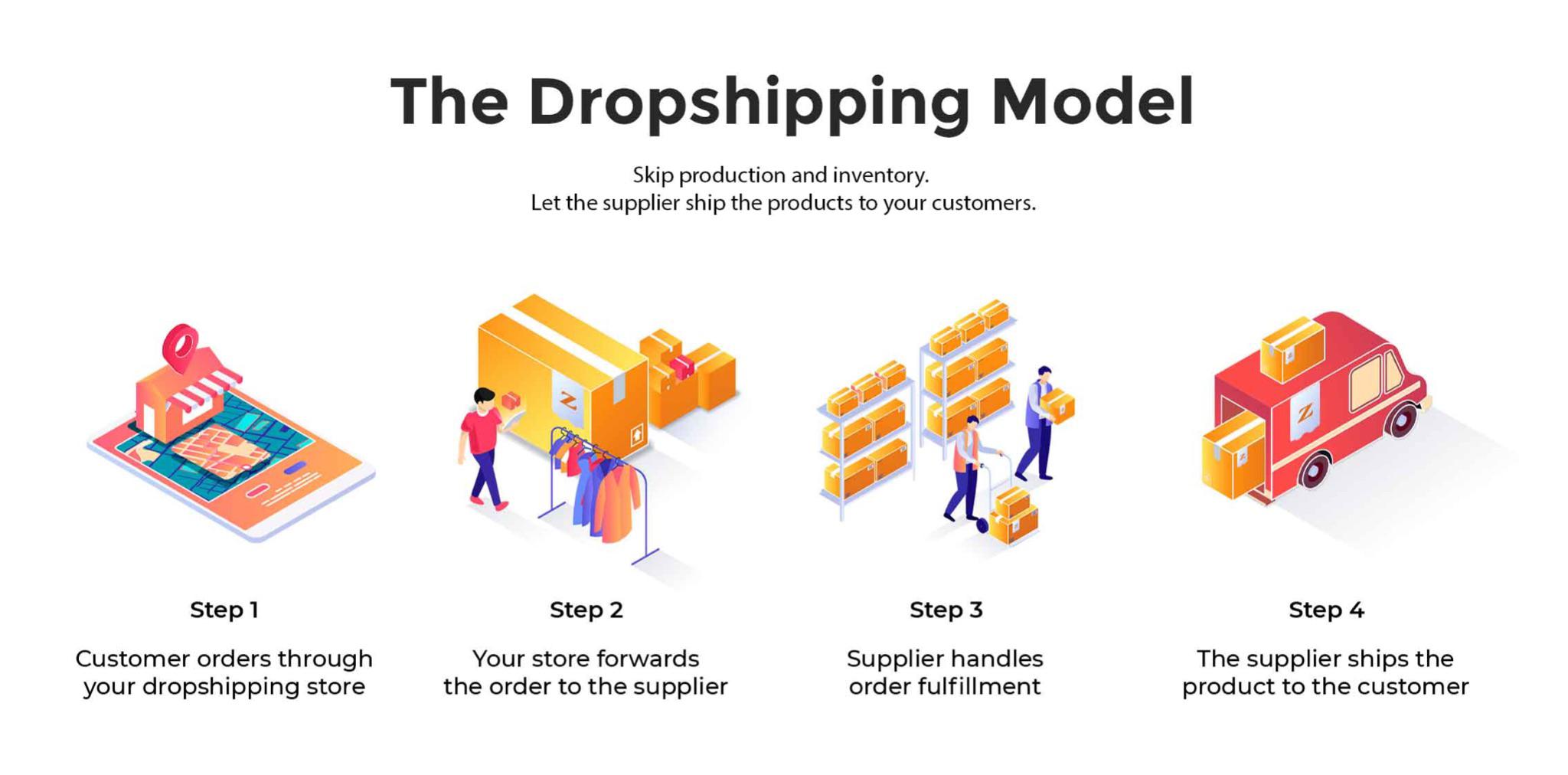 Dropshipping is a business model that uses the retail order fulfillment method without the need to store physical stocks or inventory of the products. This allows entrepreneurs to sell products to others without the need to create their own products and stock them.
Dropshipping is a business model that uses the retail order fulfillment method without the need to store physical stocks or inventory of the products. This allows entrepreneurs to sell products to others without the need to create their own products and stock them.
Since you don’t need the manpower to actually create your own products (and also spend money to store them), you don’t need a large investment that’s usually needed when starting a business.
How does dropshipping work?
With a dropshipping business, you have your own ecommerce store and you handle the ecommerce side of the business, which includes marketing and customer service. In the background, your supplier will handle the order fulfillment.
When a seller purchases a product from your store, you will receive the order and forward it to your supplier. Then, your supplier will ship the item directly to the buyer and will charge you the price of the product.
To illustrate how the dropshipping business model differs from the regular business model, here is the flow of how the regular business model works:
- Your business maintains the inventory either by creating the products (if you’re the creator) or ordering them from a supplier.
- The products remain in the inventory until a customer orders them.
- You market your products or hire others to do it to invite customers into your business.
- When a customer orders the products, you will then handle the processing, packaging, and shipping of the order to your customer.
When you’re running a dropshipping business model, here is how the flow goes:
- You market the products or hire others to do it to invite customers into your business.
- When a customer buys, you pass the order information to the supplier.
- The supplier will then handle the processing and shipping of the order to the buyer.
- Your supplier will then charge you for the product sold at a lower price.
From the illustration above, you can see why dropshipping is attractive to aspiring online entrepreneurs. Since you can sell products on your ecommerce website without worrying about the stocks, fulfillment, and shipping of orders, there are lesser risks compared to a regular business model.
What are the advantages and disadvantages of running a dropshipping business in the Philippines?
One of the most lucrative advantages of dropshipping is the fact that you can work online in the comfort of your home or anywhere you prefer as long as there is an internet connection. You can also work anytime you want as long as you have an automated system in place.
Since there is no need for a physical inventory, you don’t need to rent out a storage facility or warehouse to store your products. The capital you need is lower compared to a regular business model, with lesser overhead costs compared to running a regular business model.
Here is a table that summarizes the advantages and disadvantages of running a dropshipping business in the Philippines:
The Advantages and Disadvantages of Dropshipping in the Philippines | |
Advantages | Disadvantages |
|
|
|
|
|
|
| 4. Harder to maintain product quality |
On the other hand, it’s important to consider that the dropshipping industry is highly competitive. You also have less control over the quality of the products. You will not be able to check the products before they are sent.
Due to less control over the supply chain, customer service could become a nightmare. When customers request a refund and return the products (en masse) for defects, your gains could disappear. Unfortunately, you can’t request a refund from a supplier most of the time.
How much money can you possibly make from dropshipping?
When it comes to dropshipping, there is a lot of potential in the business model itself in earning money. However, there are no guarantees on how much success you will have and how much you could earn.
There are three factors to look into on how much money you can possibly make from dropshipping:
- The products you’re selling on your ecommerce store
- How much competition there is in the niche
- Marketing tactics you’re using to bring in more customers
In short, the amount you can make varies. It could be as low as ₱14,000 in your first month like this certain dropshipper from New Zealand did or you could make anywhere around ₱8.5 million in three months like how Marc Chapon did.
With that, let’s get on to one of the most important decisions you need to make — choosing a profitable niche.
Chapter 2: How to find profitable dropshipping niches?
The first step you need to take when building a dropshipping business is to carefully select the niche of your products. Although you shouldn’t overthink the niche selection process, it’s also important to take your time with it.
In this section, you will learn some examples of the most profitable niches for 2021 and what to look for when researching niche markets. Most importantly, you will learn how to find profitable niches using three free tools.
What are the most profitable dropshipping niches for 2021?
Not all niche products are made the same. There may be some who will argue that there are no good and bad niches. But the truth is, there will always be products that have higher profitability than others.
To have better chances of being successful, it’s a good idea to start with niches that were already proven to be profitable and popular among the masses.
Here are some of the most profitable dropshipping niches in 2021 according to data from Shopify:
- Health and personal care
- Kids and baby products
- Clothing and accessories
- Kitchen supplies and grocery
- Home and bedroom
- Home office products
- Home improvement products and tools
- Gadgets and phone accessories
- Gaming products and peripherals
- Car and motorcycle accessories
What to look for when researching niche markets?
But what if you’re not interested in any of the most profitable niches listed above?
When starting a dropshipping business (or any other type of business, for this matter), it’s important that you have some interest in what you’re doing (or selling). Selling products you don’t like would negatively affect how you maintain your ecommerce store.
For that matter, you will need to know how to research good niche markets. Prior to that, you must know first what to consider when selecting a niche.
1. Consider the potential product turnover.
If you sell seasonal or trendy products, you will be wasting time on products that will soon be outdated.
On the other hand, there may be instances when this brings a positive effect. Think about smartphone products — there are always newer models each year. However, those made in the last three years still have profitability in them, especially for those who can’t afford the new ones.
2. Consider consumables and disposable products.
Selling consumable and disposable products means acquiring (likely) repeat customers. This type of customer is important since they already trust you. Rather than find new sellers, they will simply go back to your store and order the same set of products.
This is a major reason why the health and personal niche as well as kids and baby products are highly profitable. Many of the products are only used once (think of face masks, baby wipes, and hydrating oils).
3. Consider choosing a niche with a lot of accessories.
Since the introduction of cheaper motorcycles in the Philippines, there has been no shortage of people who want to buy motorcycle accessories and parts. In fact, that’s the reason why a lot of motorcycle shops now sell various accessories, even as tiny as stickers.
It’s also a good idea to find customers with passion and target the accessories they need. For example, since the start of pandemic lockdowns, the number of bikers in the Philippines has significantly increased.
What tools can you use to find a profitable dropshipping niche?
Now that you have ideas on what to look for when searching for a profitable niche, it’s time to learn how to use tools that will allow you to check and measure the demand for the market and the products. Before you start, make sure to prepare a list of niche ideas you have in mind.
Here are the tools you can use to find and check profitable dropshipping niches:
- Google Keyword Planner: This tool helps you check the average search volume of your niche ideas (a good representation of how many people search for your niche in Google). It also helps you discover related niches that might prove to be more profitable.
- Google Trends: This tool helps you see how popular your niche ideas are and discover trends within Google Search, Google Shopping, YouTube, and related products. It also helps you discover potential niches and products that have high or rising popularity.
- Facebook Potential Audience: This tool shows you the potential audience of your niche (a good estimate of how many people might be interested) according to the parameters you have set.
Google Keyword Planner
A good way to measure the demand for a niche is to see how many people are searching about it on search engines. Fortunately, Google, which is also the biggest search engine, has a free keyword tool where you can find how popular a keyword is.
To use the Google Keyword Planner, follow these steps:
Step 1: Open the Keyword Planner Tool
The Google Keyword Planner is a free tool for advertisers who use Google Ads. To use the tool, you must create a Google Ads account first. But don’t worry, you don’t need to run any ads and spend money to use the tool.
Head over to Google Keyword Planner and create an account.
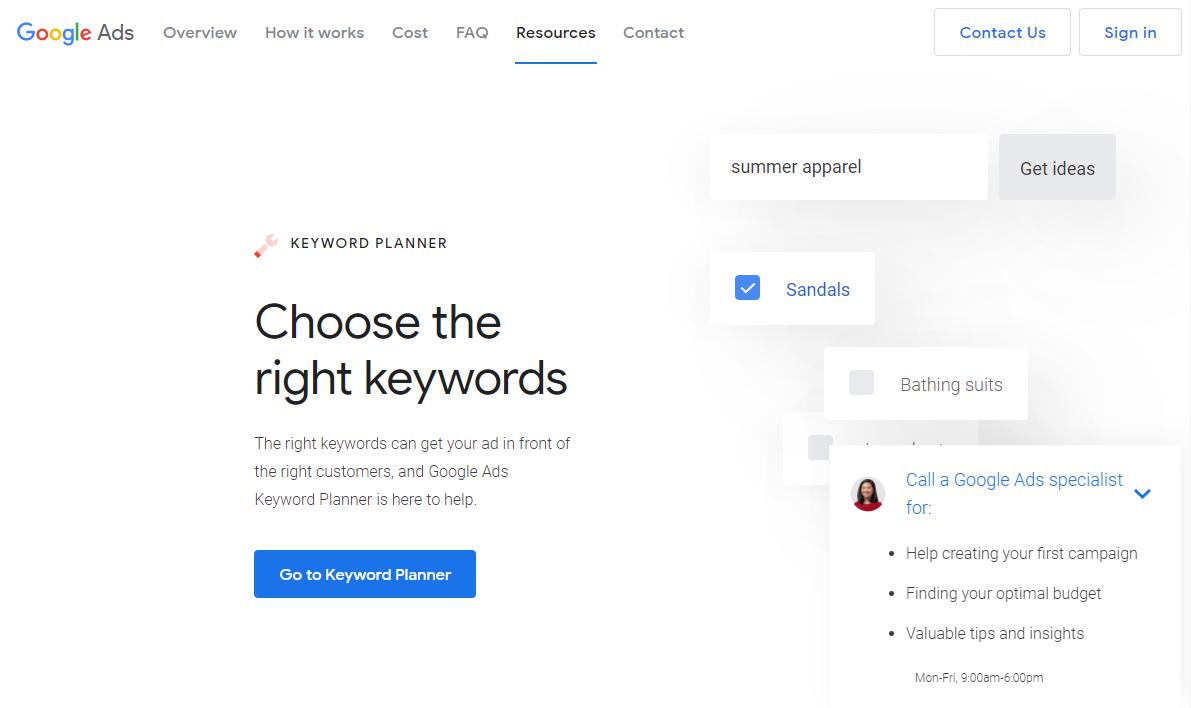 Follow the prompts and provide the information needed including your email address and website (you can use any website for this matter). You will also have to provide some payment information even if you won’t actually be running a campaign.
Follow the prompts and provide the information needed including your email address and website (you can use any website for this matter). You will also have to provide some payment information even if you won’t actually be running a campaign.
Important note: To use the keyword planner, you will have to set up a Google Adwords campaign. After you finish creating the campaign, you can immediately disable it by clicking the dropdown and selecting the pause option as you can see below. 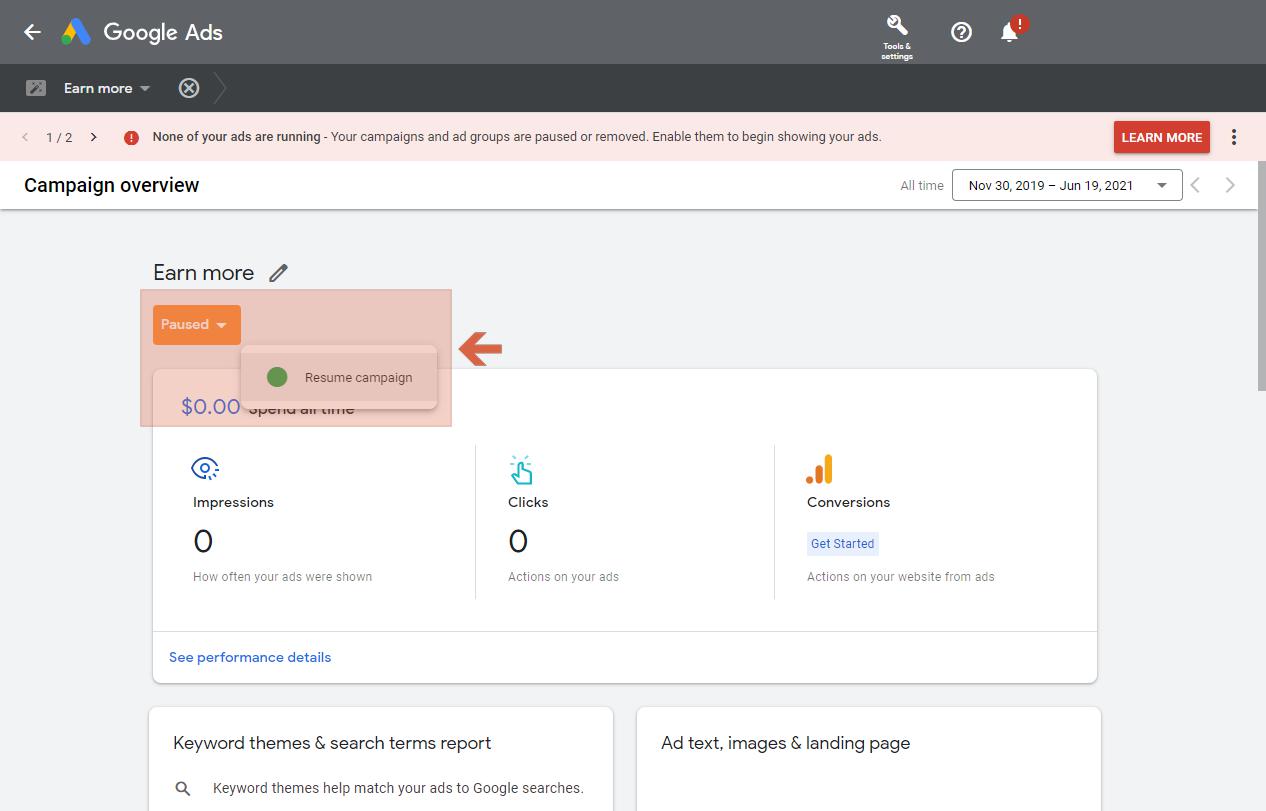 Then, click the Tools button at the upper right of the screen (wrench icon) and choose “Keyword Planner” from the options.
Then, click the Tools button at the upper right of the screen (wrench icon) and choose “Keyword Planner” from the options.
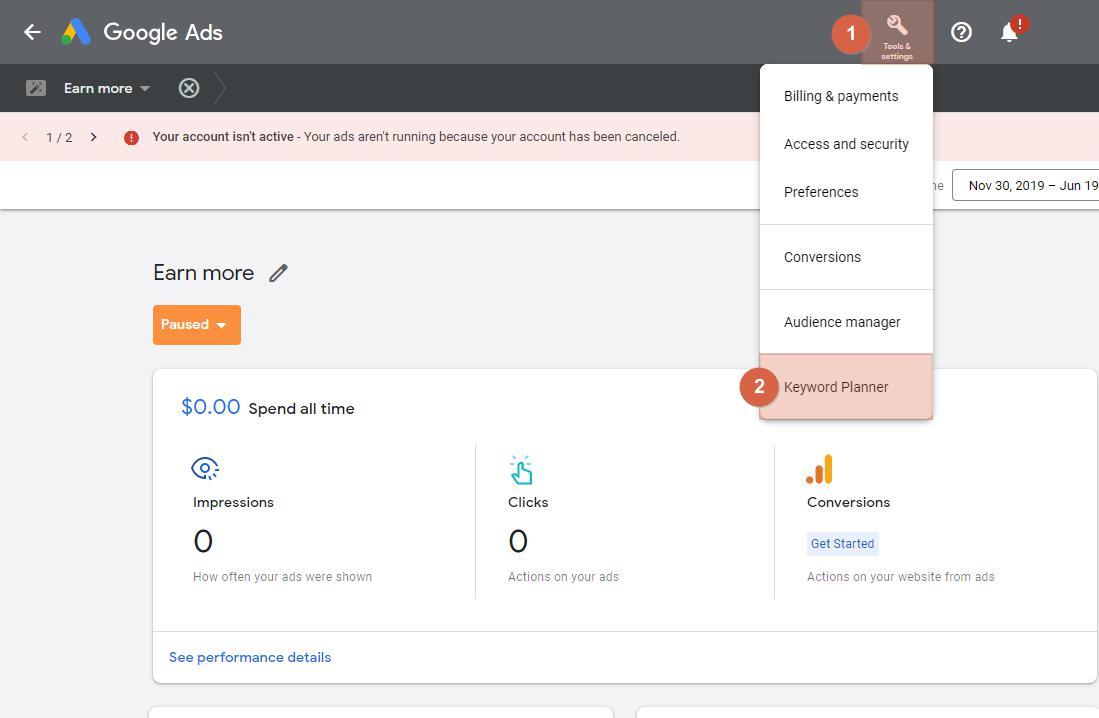
Step 2: Enter Your Niche Ideas
What will greet you at the homepage of the Google Keyword Planner is an option on how to proceed. Both will bring you to the same results page. However, choosing only to get search volume and forecasts will give you results only for the keywords you entered.
Because of this, it’s preferable to start with “Discover new keywords”.
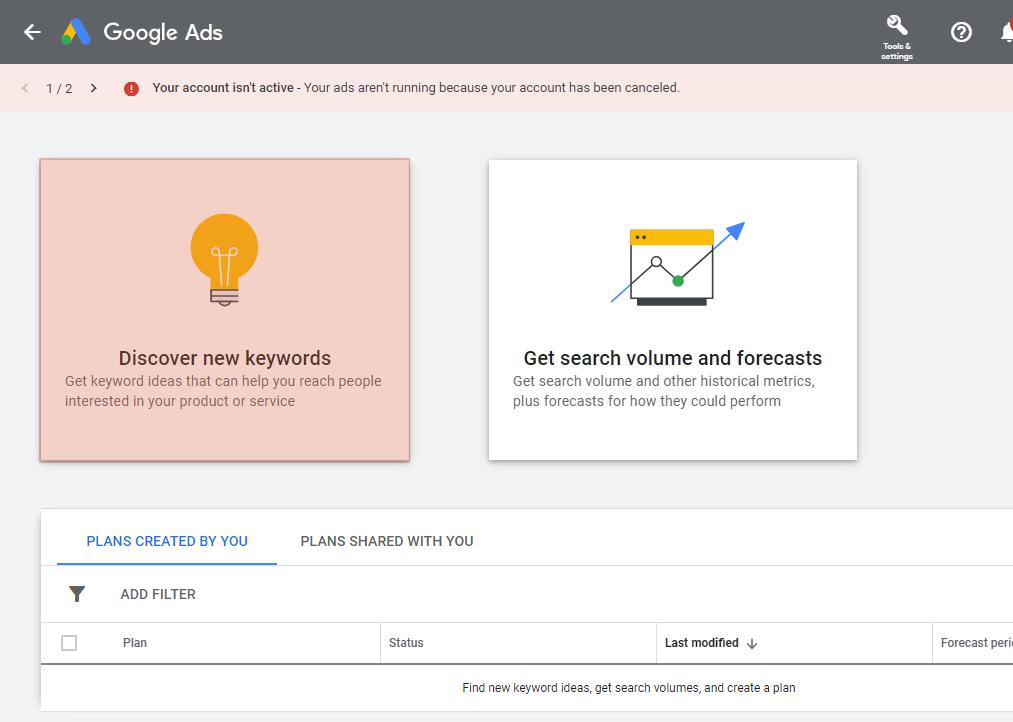 In the space provided, enter a niche idea (and related ones).
In the space provided, enter a niche idea (and related ones).
For instance, you may be thinking about starting a dropshipping business on bike accessories. You can then enter “bike accessories” in the space provided.
You can also change the target country if you want to include some. The Philippines will be selected by default if you’re accessing the tool from the country.
After that, click the “Get Results” button at the bottom.
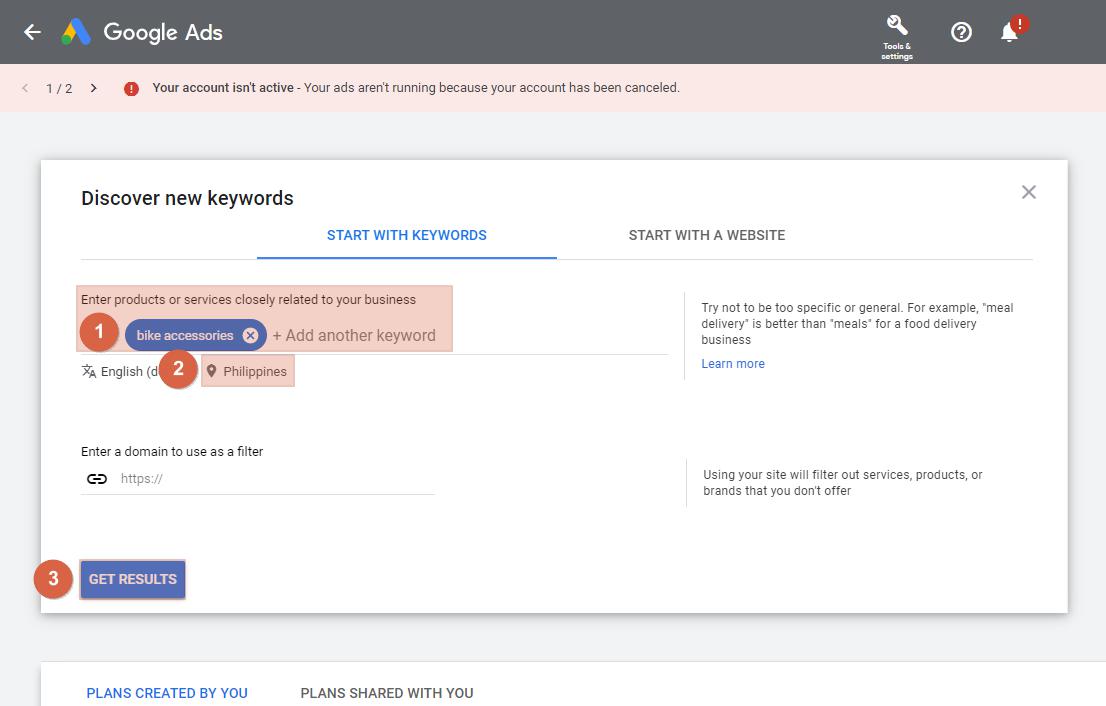
Step 3: Check Volume and Other Ideas
On the results page, you first see the average monthly searches for the niche keyword that you entered.
For example, the keyword “bike accessories” gets around 1,000 to 10,000 monthly searches in the Philippines.
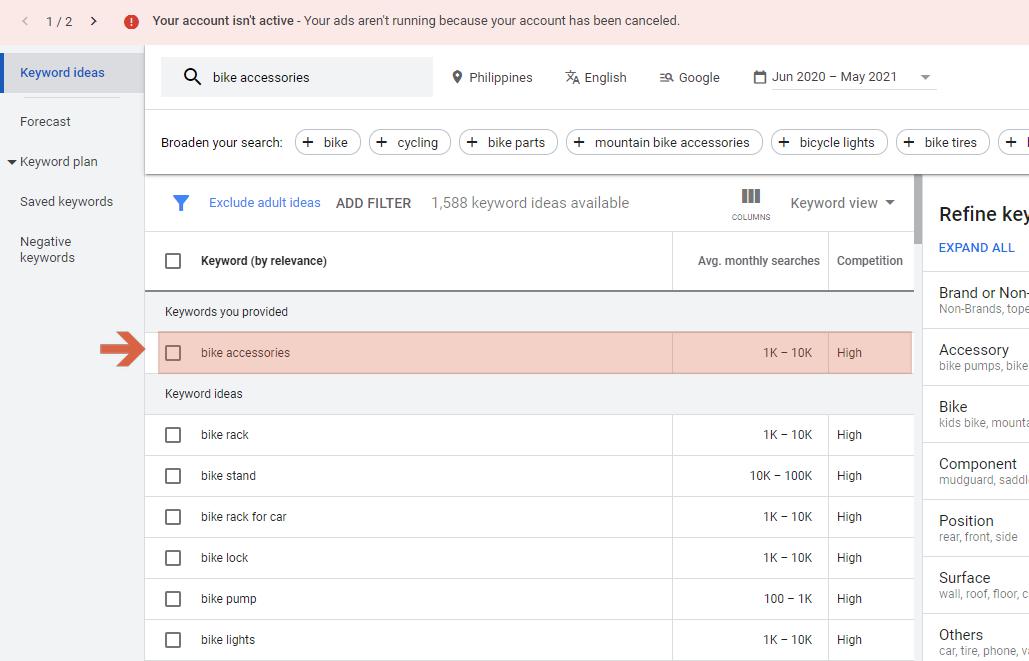 Aside from the average monthly searches, Google Keyword Planner would also show you other details like the competition and top-of-page bids. However, these are about ads so they may not always be that relevant unless you’re planning to run ads.
Aside from the average monthly searches, Google Keyword Planner would also show you other details like the competition and top-of-page bids. However, these are about ads so they may not always be that relevant unless you’re planning to run ads.
The gold here is the keyword ideas that Google Keyword Planner will provide. Many of these are product searches that provide you a good idea of what your target customers are searching for in Google.
Google Trends
The Google Keyword Planner is a great tool to measure the raw search volume and estimate the likely demand of the niche and its products according to how many people search for them on Google.
On the other hand, Google Trends is the tool of choice to gain detailed insights on the niche like its search interest over time, related terms and queries, the geographical concentration, as well as the seasonality of the market for that niche.
To use Google Trends, follow these steps:
Step 1: Enter Your Niche on Google Trends
Unlike the Google Keyword Planner, you don’t even need to create an account to use Google Trends. It’s publicly available to anyone who wants to use it. To start using the tool, visit Google Trends on your browser.
If you used the link above, Google Trends will automatically use the Philippines geotag. Meaning, the coverage of the trends is limited inside the Philippines only (you can always change it whenever you like).
In the tool, enter your niche idea in the space provided and either click from the suggestions or press the enter key on your keyboard.
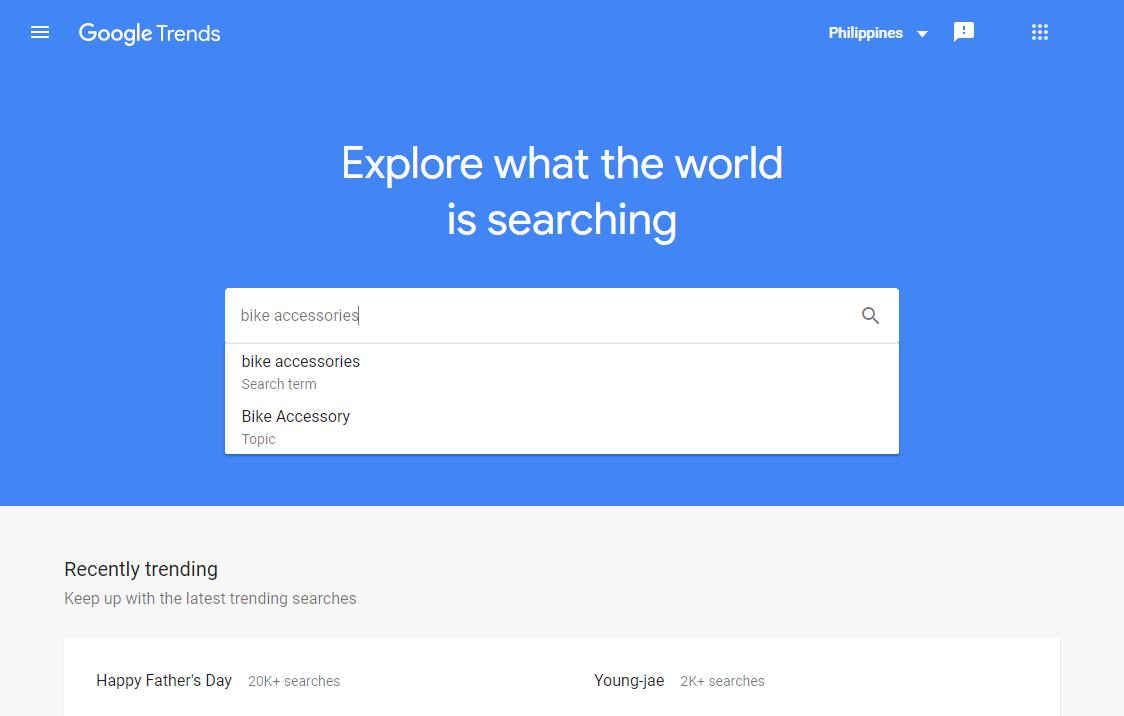
Step 2: Analyze the Interest Over Time of the Niche
After entering the search term, Google Trends will show you a graph that shows the interest over time of your dropshipping niche idea.
To show more data, you can play with the properties of the graph including the term, category, and data source.
In the example, the data is for the past five years up to the present time:
 The graph above shows that the popularity of the term “bike accessories” rose sometime around May and June 2020. It’s also quite clear that the popularity is much higher compared to the previous years.
The graph above shows that the popularity of the term “bike accessories” rose sometime around May and June 2020. It’s also quite clear that the popularity is much higher compared to the previous years.
When finding a profitable niche, it’s important to measure whether or not the interest overtime is increasing, stable, or declining. Increasing popularity could provide you with fast profit while stable popularity means there is a stable demand for the niche.
Avoid niches with declining popularity.
Step 3: Take Note of the Related Topics and Queries
Once you scroll down below, you will see related topics and queries. You can switch from rising topics and queries to top ones to see more ideas. Simply click its dropdown button and select from the options given.
You can also download them as CSV to be able to review them offline or see all the rising and top topics and queries altogether.
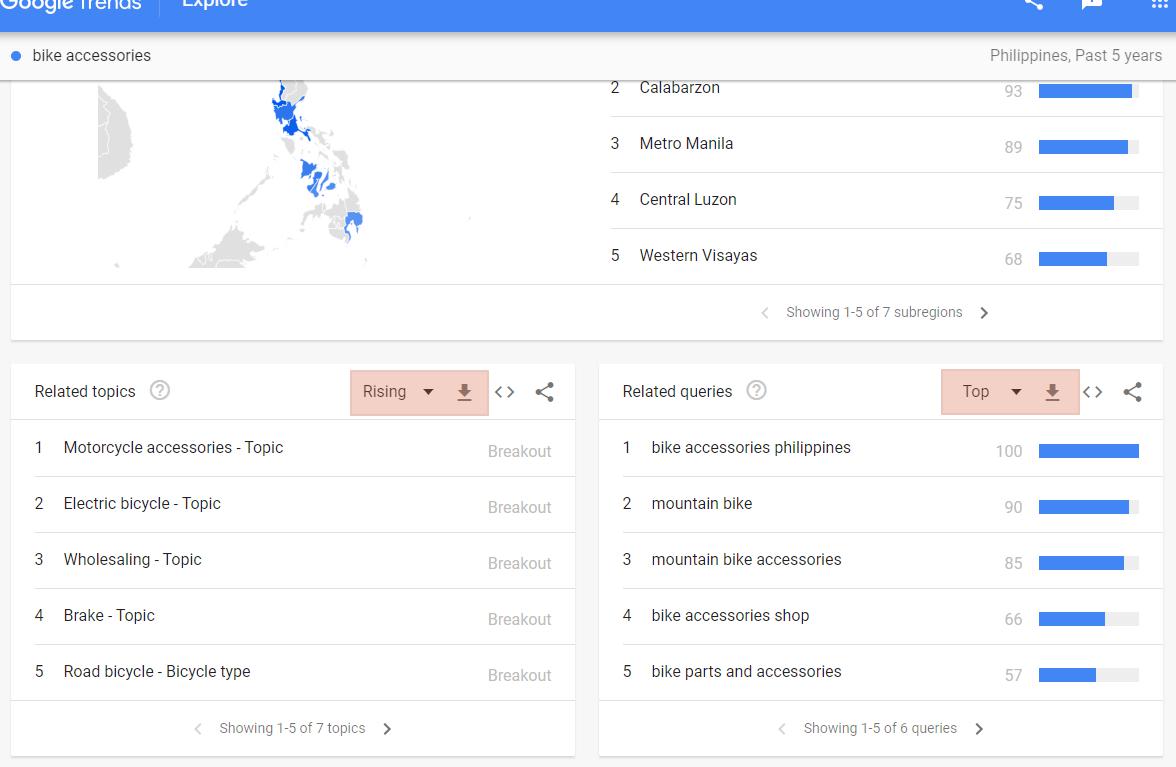 Good Trends is a great tool to better understand the popularity, trend, and seasonality of your niche ideas. You can also use it to compare various niches and pit their data against one another.
Good Trends is a great tool to better understand the popularity, trend, and seasonality of your niche ideas. You can also use it to compare various niches and pit their data against one another.
Facebook Potential Audiences (Business Suite Insights)
Facebook Potential Audiences is a new tool from Facebook that will be replacing their Facebook Audience Insights (set to retire at the end of June 2021). With 80.55 million users in the Philippines, this tool could help you check how profitable your niche ideas are.
To use Facebook Potential Audiences, follow these steps:
Step 1: Navigate to Facebook Business Manager
When creating an account, you can use your personal profile. You will need to provide some information for your business like the business name, email address, address, and others. Then, you have to add existing Facebook pages or create a new one.
Head over to Facebook Business Manager and either create a new account or log in if you already registered before. Provide the necessary business details if this is your first time using the tool.
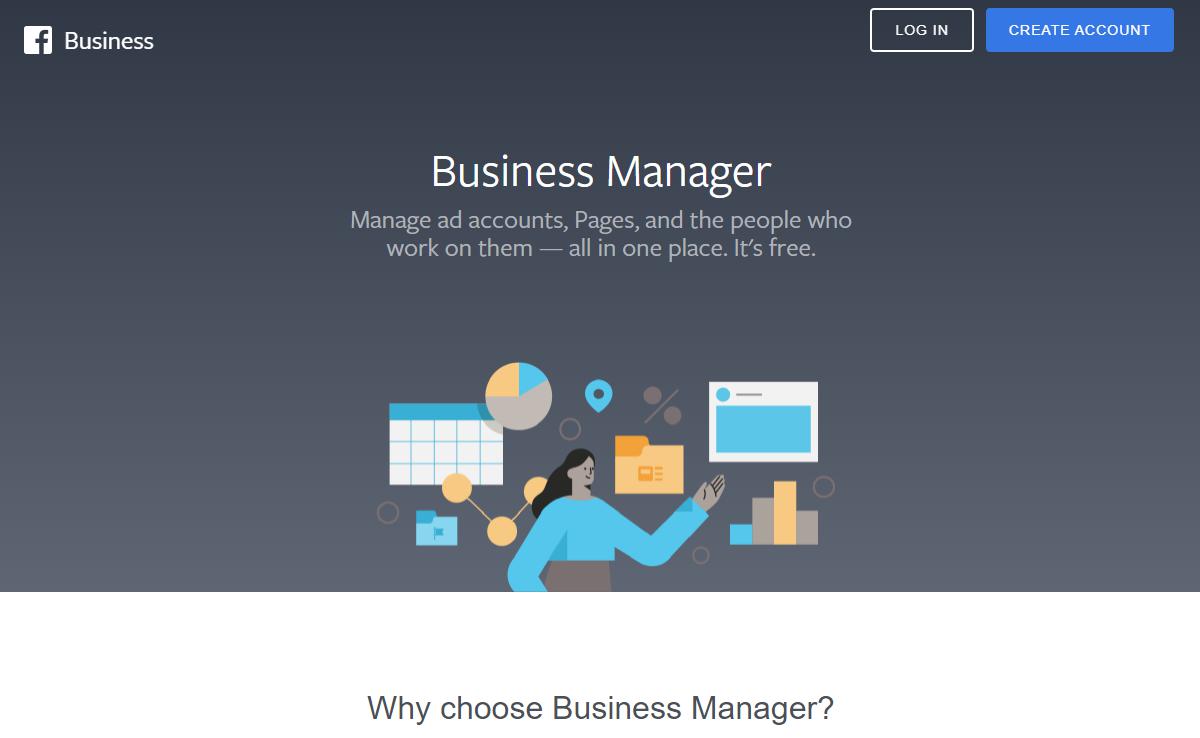
Step 2: Open the Potential Audience Tool
After logging in (assuming you already have your business details set up), you will see a dashboard for your Facebook business. At the left-side pane, you will see various tools that you can use to operate your business.
Click the expand button to show all the available tools. Scroll down and click “Audience Insights”, which is part of the “Analyze and Report” tools group.
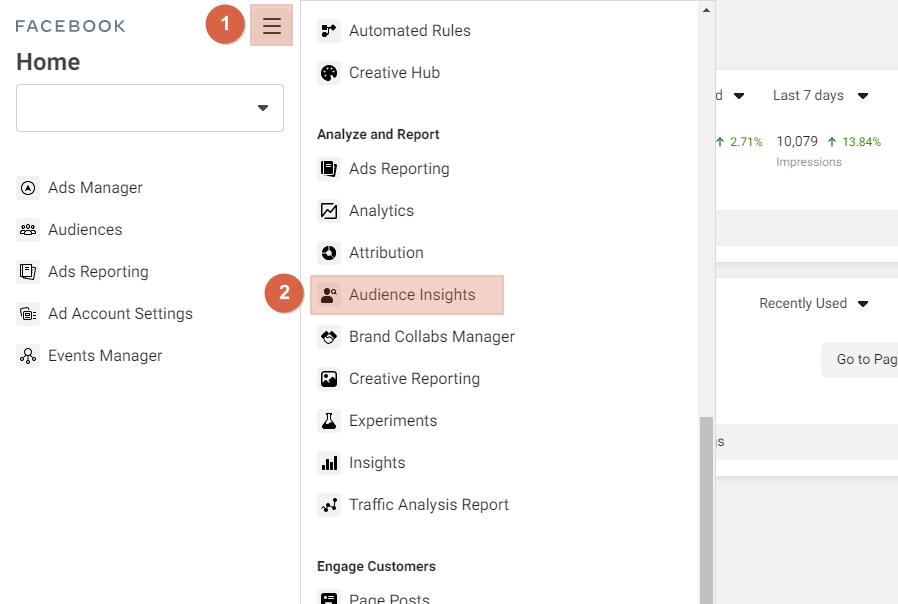 Check that you’re viewing the potential audience instead of the current audience of your business. If you’re currently seeing the current audience tab, simply click “Potential Audience” at the top of the dashboard.
Check that you’re viewing the potential audience instead of the current audience of your business. If you’re currently seeing the current audience tab, simply click “Potential Audience” at the top of the dashboard.
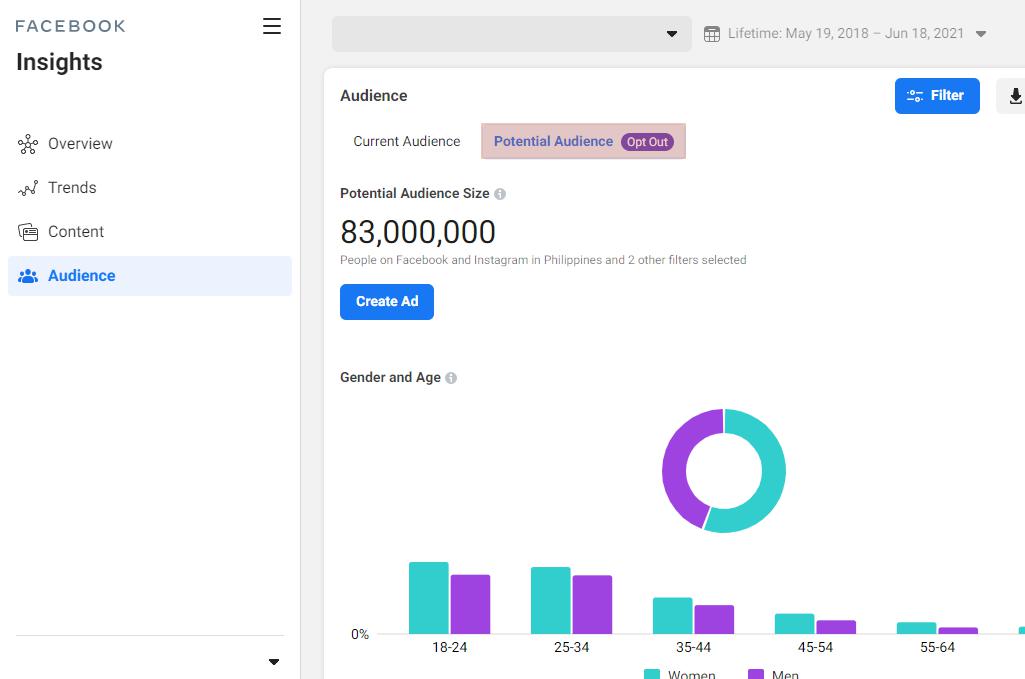
Step 3: Filter Your Potential Audience With Your Niche Idea
To find out the potential audience for your niche idea, you will need to use the filter function of the tool.
Click on the “Filter” button and provide the following information:
- Location: This should be set to your target country (in this case, it’s the Philippines).
- Age: The age range of your potential customers.
- Gender: Select men, women, or all, when applicable.
- Interests: Enter your niche idea here. Note that the exact keyword may not always be possible since this depends on the available interest options of your audience.
- Language: You can usually leave this blank since most Filipinos understand English.
For example, if your niche is motorcycle accessories and your target audience are men from age 18 to 50 in the Philippines, your potential audience size according to Facebook and Instagram’s data is around 2.8 million people.
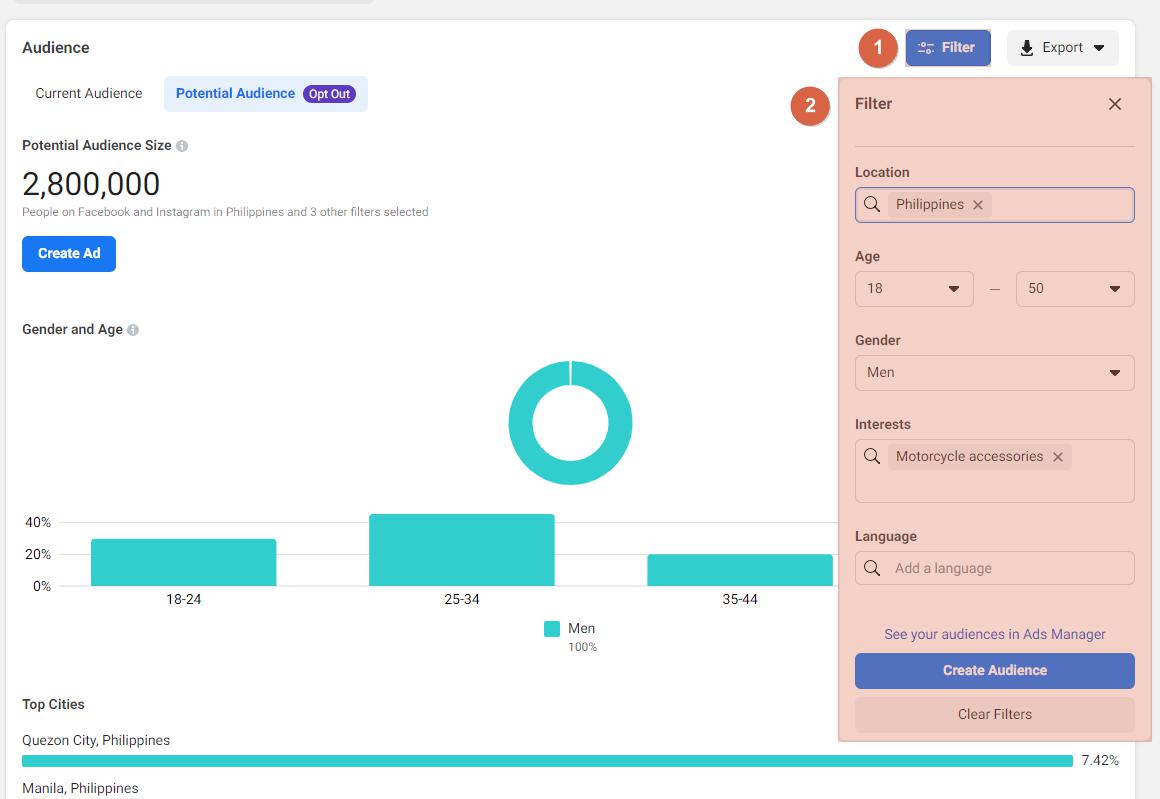 Since Facebook is the largest social media network in the world (and the platform of choice for Filipinos), you can be sure that its data is comprehensive. It will help determine if your niche idea is profitable according to the potential audience.
Since Facebook is the largest social media network in the world (and the platform of choice for Filipinos), you can be sure that its data is comprehensive. It will help determine if your niche idea is profitable according to the potential audience.
Once you have a good list of profitable niches, you can then proceed to more important matters in building your dropshipping business like finding suppliers and setting up your own store with your platform of choice.
Chapter 3: Where to find a dropshipping supplier for the Philippines?
Finding the right dropshipping supplier is important to your business. After all, what you can sell depends on what’s available on the supplier’s listing. That’s why you must always evaluate the different dropshippers available based on your needs and cases.
In this section, you will learn the different dropshipping suppliers available in the Philippines. Note that there may be more out there, but the seven suppliers listed here are currently the best ones you can find.
Let’s start.
Where can you source your products?
No supplier is made the same. Although the products may be similar to one another, each dropshipping supplier comes with its own advantages and disadvantages.
Below is an overview of the best dropshipping suppliers in the Philippines:
| Supplier | Sign Up Cost | Dropshipping Administration | Delivery Time |
| AliExpress | Free | With help from extensions and plugins | 3-15 days |
| AliDropship | ₱4,200+ | All-in-one solution for dropshipping business management | 3-15 days |
| Chinabrands | Free | One-click publish options for Shopify | 7-25 business days |
| Esources | ₱1,100 | Connect with suppliers | 3-46 days |
| Oberlo | Free | Product sourcing and order fulfillment automation | 18-34 days |
| Dropify | ₱9,000 per month | All-in-one solution for dropshipping business management | 3-18 days |
1. AliExpress
AliExpress is one of the most prominent e-commerce sites in the world. It’s the consumer-facing business of Alibaba, a world-renowned B2B selling and wholesale platform. Because of that, the products on AliExpress have ridiculously low prices perfect for dropshipping.
You can directly use AliExpress with Shopify using an extension. There are also plugins available for stores running on WordPress WooCommerce. Unfortunately, if you plan to dropship on Lazada or Shopee, you have to manually manage the orders.
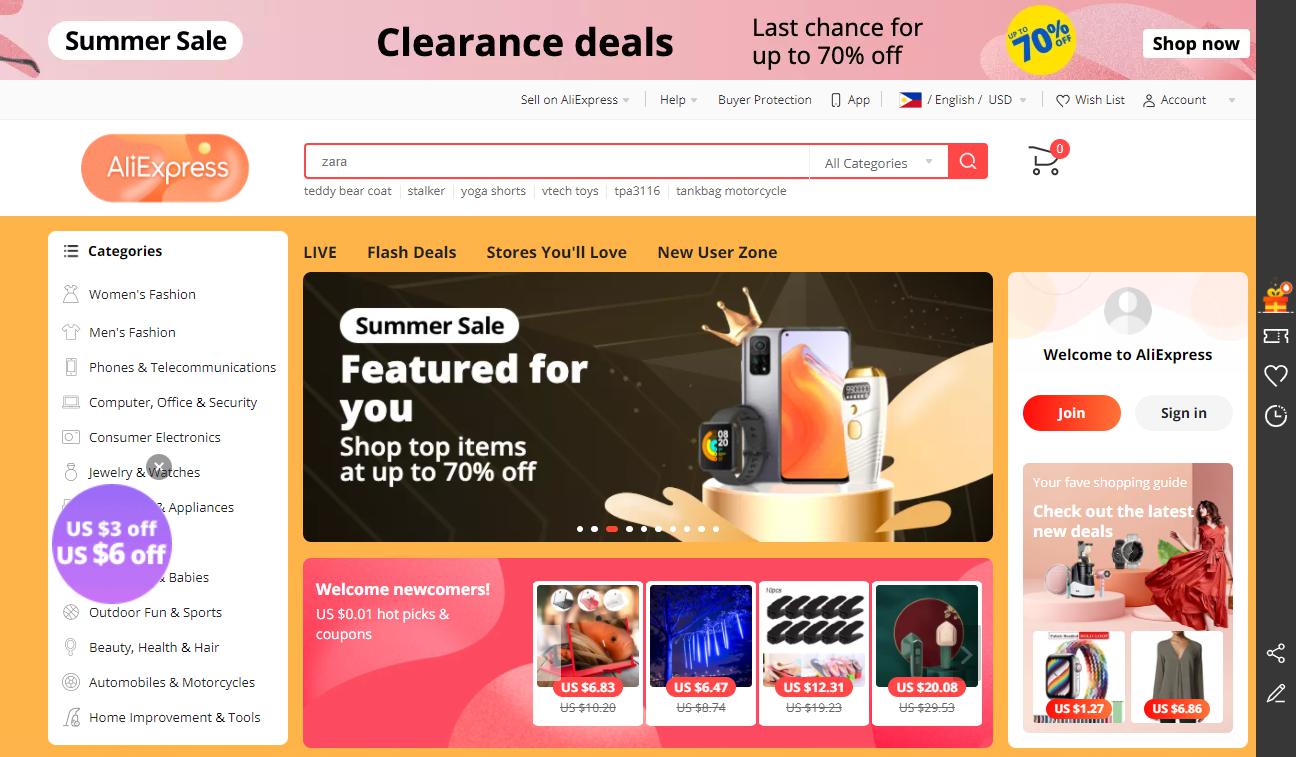 Dropshipping with AliExpress would also simplify the shipping. They would provide you with some options depending on the supplier. FedEx delivery costs more than twice compared to AliExpress Premium Shipping, but it’s way faster.
Dropshipping with AliExpress would also simplify the shipping. They would provide you with some options depending on the supplier. FedEx delivery costs more than twice compared to AliExpress Premium Shipping, but it’s way faster.
As for the estimated delivery time, AliExpress Premium Shipping takes around 7 to 15 days while FedEx could take only 3 to 5 days. It’s also important to consider the time it takes to actually deliver the product to your customer’s front doors.
You can freely use AliExpress in your dropshipping business. You can browse freely like a buyer and even contact the supplier from there. The extensions and plugins however aren’t free but they help manage your business easier.
2. AliDropship
Strictly speaking, AliDropship isn’t a supplier or even an e-commerce site. However, it made this list because of how it connects you with AliExpress and allows you to easily import them over to your e-commerce store.
AliDropship is a plugin specially made for dropshipping. Its main product is a plugin (an original, more powerful plugin that works with any WordPress website and another one that only works with WooCommerce websites).
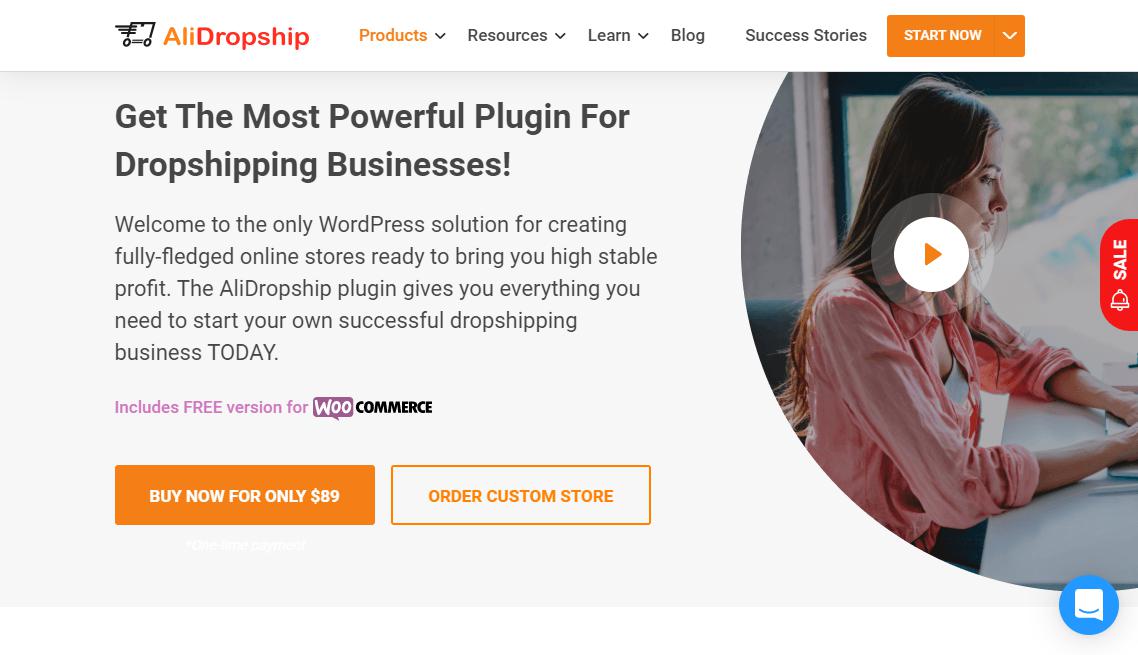 Basically, AliDropship connects you with AliExpress, a large e-commerce store owned by Alibaba, and lets you import products directly to your store. With more than 100 million items, there are more products and categories than you can keep count of.
Basically, AliDropship connects you with AliExpress, a large e-commerce store owned by Alibaba, and lets you import products directly to your store. With more than 100 million items, there are more products and categories than you can keep count of.
In a manner of speaking, AliDropship simplifies dropshipping (instead of you scouring Alibaba or AliExpress for niches). The plugin costs $89 (around ₱4,200), paid one time, and is good for one website or domain only.
As for the shipping, AliDropship basically imports the shipping options available in AliExpress. They also recommend dropshipping business owners to contact the suppliers directly and ask alternative couriers that can deliver the products.
3. Chinabrands
Chinabrands is another known dropshipping supplier in the Philippines (and in most of Asia). Many of their products are somehow cheaper than other suppliers, which means more profit on your side.
Unlike Alibaba, Chinabrands actually has dedicated dropshipping services. The way it works is simple — you post the items you want to share from Chinabrands to your ecommerce store (with the help of an extension or an application programming interface).
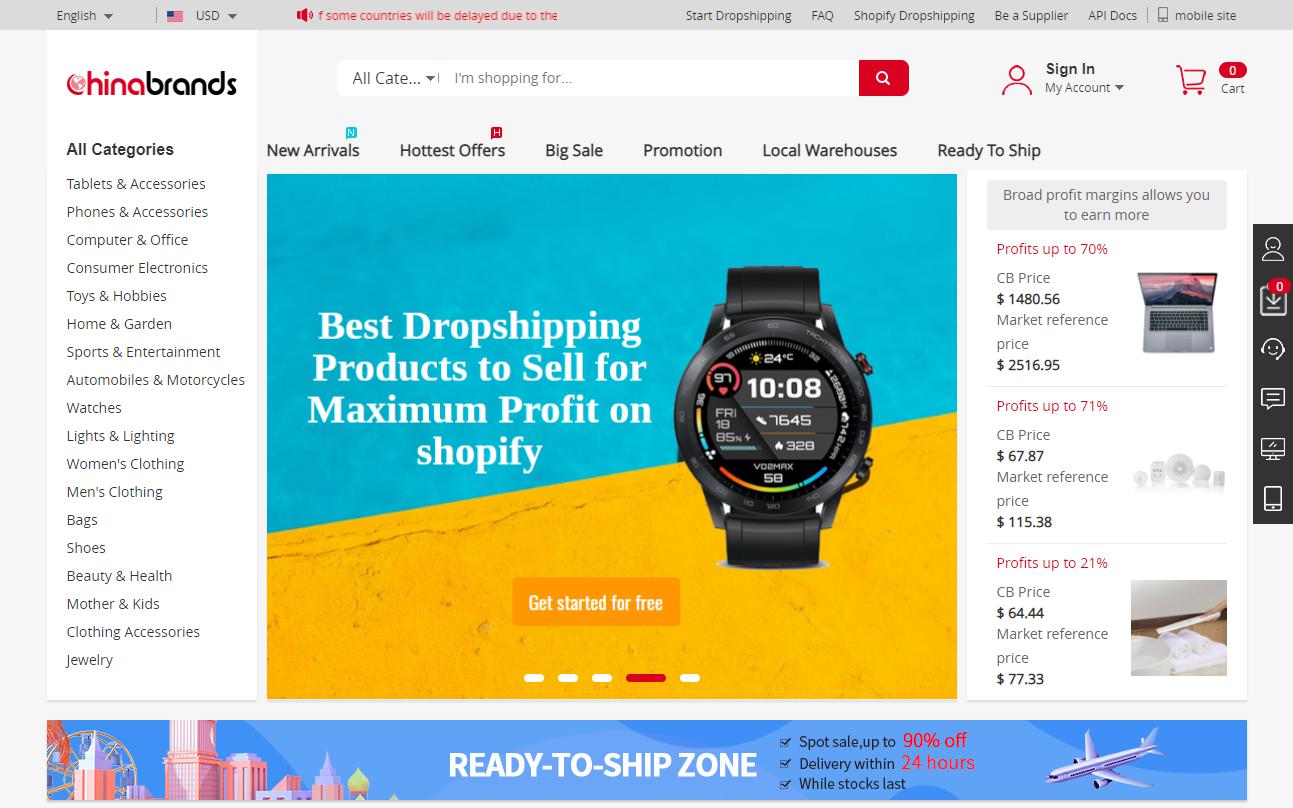 The number of products you can choose from Chinabrands is also vast — somewhere around 500,000 items. Delivery time may also vary depending on the shipping company used. Chinabrands estimate the delivery time to be between 7 to 25 business days.
The number of products you can choose from Chinabrands is also vast — somewhere around 500,000 items. Delivery time may also vary depending on the shipping company used. Chinabrands estimate the delivery time to be between 7 to 25 business days.
As for the cost, anyone can use the company’s dropshipping services as long as they register for a free account. However, you can upgrade your account to VIP for $3.99 per month (₱190+) to enjoy more discounts.
4. Esources
Most of the actual suppliers from the websites mentioned earlier are from Asia. Esources, however, is based in Europe (specifically, the United Kingdom). It’s a massive directory of suppliers with product quantities comparable to that of Chinese suppliers.
Esources set the tone differently by being dropshipping-friendly. In fact, they have an entire directory dedicated to dropshipping only and list out the actual suppliers of various products and categories.
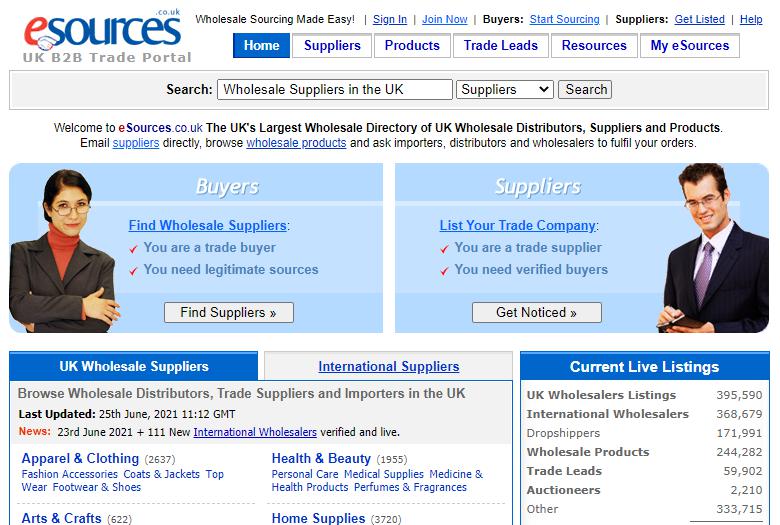 It’s important to note that product prices are not that cheap compared to Chinese suppliers. This may sound counterintuitive at first. But if you consider the higher quality of the products, the prices make more sense.
It’s important to note that product prices are not that cheap compared to Chinese suppliers. This may sound counterintuitive at first. But if you consider the higher quality of the products, the prices make more sense.
Although Esources is free to use, you would want to use their premium membership that costs €20 or around ₱1,100. It allows you to access the full directory Esources has to offer and contact any supplier directly.
Esource is mainly a supplier directory. You will have to discuss the shipping options available from the supplier’s point of origin to the Philippines. As for the shipping time, it usually takes anywhere between 3 to 46 days, depending on the method used.
5. Oberlo
Technically, Oberlo isn’t a supplier directory nor an e-commerce website. It’s an app that would let you source products from AliExpress suppliers. Because of that, you would gain access to millions of products available for market and customization.
In a way, Oberlo is similar to AliDropship. It’s an app that would help you find suppliers of products and add them to your store in a few clicks. It would also help you manage your business by shipping products directly from suppliers to your customers.
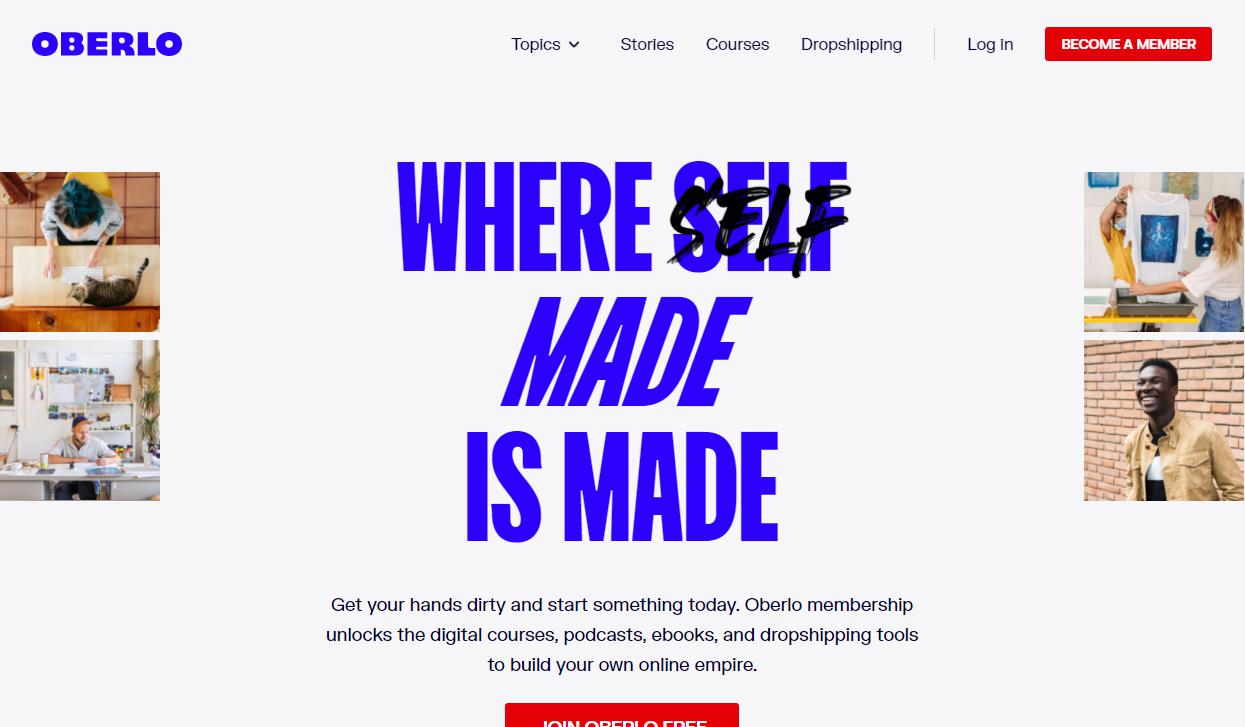 The only caveat with Oberlo is that it only works with Shopify, exclusively. On the positive note, many dropshippers prefer to use Oberlo and Shopify as it simplifies the dropshipping process and eliminates many of the hard parts of running the business.
The only caveat with Oberlo is that it only works with Shopify, exclusively. On the positive note, many dropshippers prefer to use Oberlo and Shopify as it simplifies the dropshipping process and eliminates many of the hard parts of running the business.
It also bridges the gap between you and the supplier. In case you need customized products, it would help you connect with the supplier directly. The good news is that Oberlo has a free plan with a generous product limit of 500 (with unlimited monthly orders).
As for shipping, Oberlo would give you various methods available depending on the warehouse location, product type, and the supplier itself. Usually, orders made via AliExpress Standard Shipping take anywhere from 18 to 34 days.
6. Dropify
Dropify is a local dropshipping company that enables Filipinos to experience dropshipping themselves without having to worry about technical matters. To be precise, Dropify allows you to start a dropshipping business in only a few clicks.
In comparison to others on this list, Dropify will serve you curated products for various catalogs including sleep essentials, sneakers, baby products, and others. All you have to do on your side is to subscribe to any catalog and pay the monthly subscription.
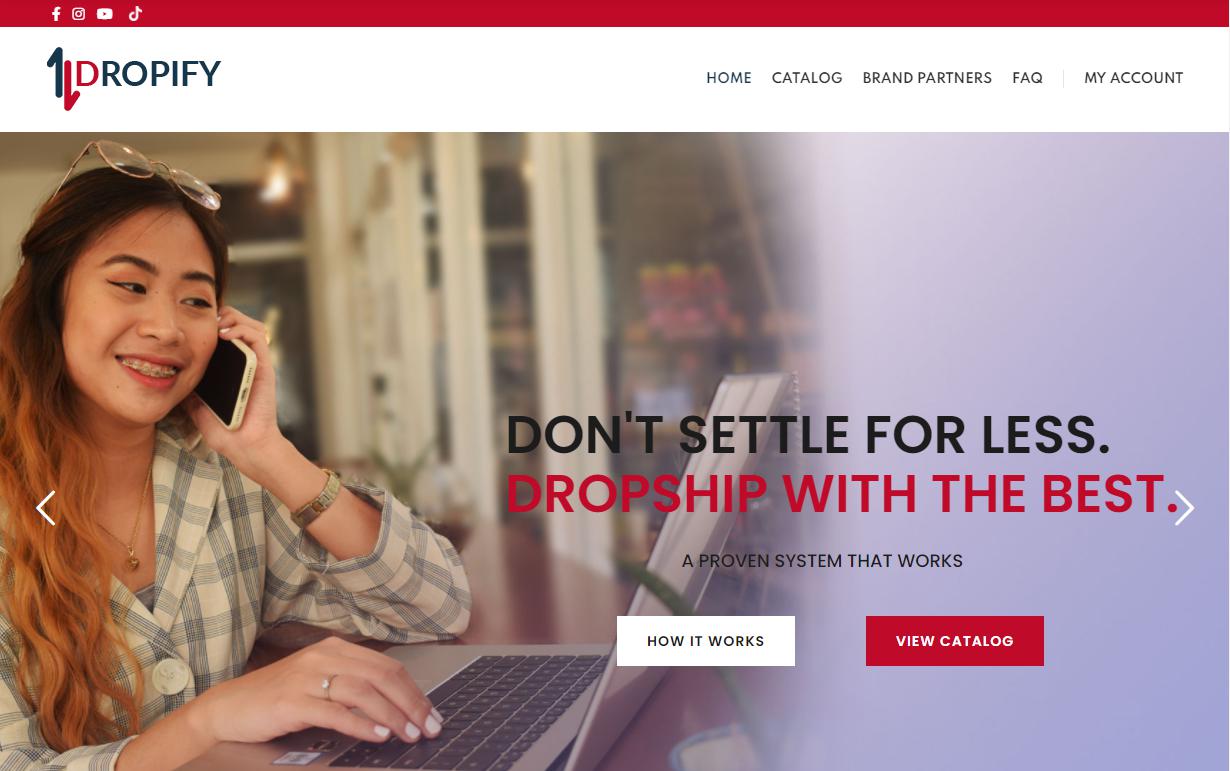 Once you’re subscribed, you can then select specific products you want to sell in your store. Although Dropify didn’t disclose the exact details as to where they source out their products, you can see a page on their website that allows brands to partner with them.
Once you’re subscribed, you can then select specific products you want to sell in your store. Although Dropify didn’t disclose the exact details as to where they source out their products, you can see a page on their website that allows brands to partner with them.
Currently, Dropify only partners with Lazada and Shopee (with plans for Shopify and WooCommerce). They will create an online store for you on those platforms and manage your business from there.
As such, delivery is handled by Lazada and Shopee couriers. Depending on the location of the customer and where the product is shipped from, the delivery will take anywhere from 3 to 18 days.
Once you find a supplier that would provide you with the best products to sell, it’s now time to actually start your dropshipping business and build your e-commerce store on your platform (or platforms) of choice.
Chapter 4: What platforms can you use to start your dropshipping business in the Philippines?
It’s critical that you select the platform or platforms where your e-commerce store will reside. In a way, what you use will become your sales channel. Since you will be dropshipping in the Philippines, it’s also important that you take into account where your sellers typically shop.
Where can you sell your dropshipping products?
While reviewing the platforms listed below, remember that you can build your e-commerce store in more than one place. Each place to sell also has its own advantages, disadvantages, and cost.
Below is a table that compares the different platforms:
| Platform | Advantages | Disadvantages | Cost | Dropshipping Features |
| Shopify | All-around e-commerce platform | Not ideal for those who want to start without spending much | At least ₱1,400 per month | Dropshipping and business apps |
| WooCommerce | Low cost and flexibility | Tedious startup process | At least ₱69 per month | Dropshipping and business plugins |
| Lazada | Exclusive only to Filipinos | High competition | ₱400 | Integration with third-party services and apps |
| Shopee | Most visited e-commerce website in the Philippines | Possible competition with suppliers | Free | Integration with third-party services and apps |
| Top social platform in the Philippines | Not dropshipping-friendly | Free | None |
1. Shopify
Shopify is one of the most popular e-commerce software in the world. It’s an all-around platform that will enable you to create an e-commerce store from scratch and customize it according to your liking.
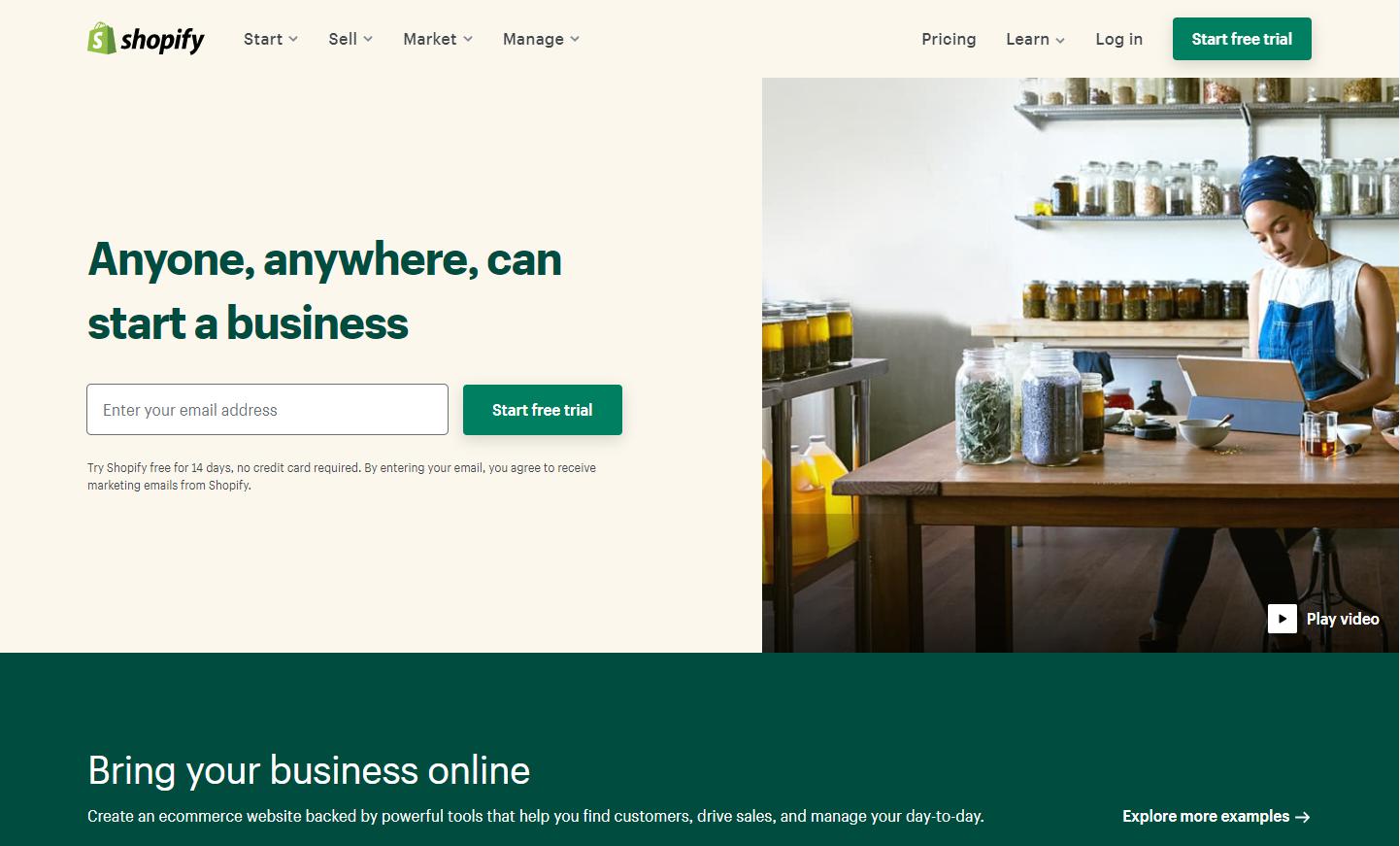 On the downside, Shopify isn’t free. At the very least, you will have to shell out $29 per month (around ₱1,400 every month) for the basic plan. You must also have your own domain name, which you can buy for as low as ₱360 from z.com.
On the downside, Shopify isn’t free. At the very least, you will have to shell out $29 per month (around ₱1,400 every month) for the basic plan. You must also have your own domain name, which you can buy for as low as ₱360 from z.com.
To start, all you need is to register and start with a free 14-day trial. During this trial phase, you don’t need to enter your payment details (you only have to when you launch or publish your store online).
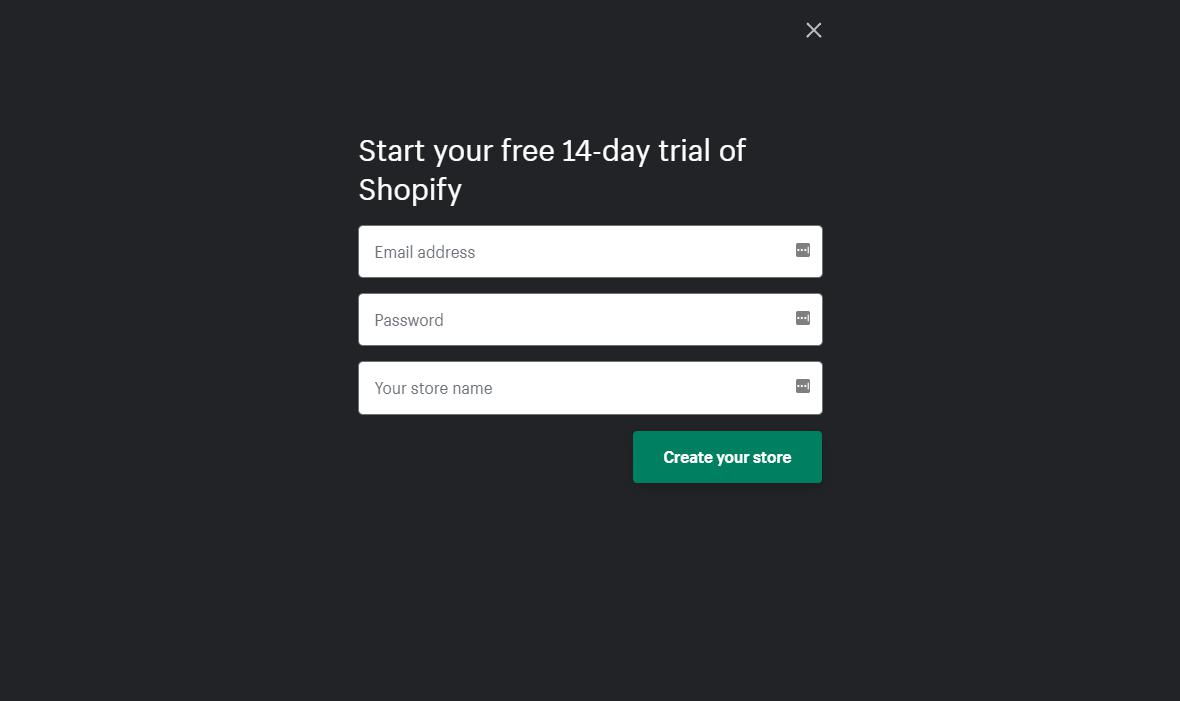 After that, you will then be able to add products, set up your store, set up payment for your customers, and others. You can also customize the look and feel of your site easily by applying a theme and playing with its configuration.
After that, you will then be able to add products, set up your store, set up payment for your customers, and others. You can also customize the look and feel of your site easily by applying a theme and playing with its configuration.
Dropshipping on Shopify
Shopify is the most dropshipping-friendly platform ever made. You can customize it as much as you want and install new functionalities and features using apps. In fact, there are many dropshipping apps you can use that will allow you to connect with many suppliers.
Some of the most popular dropshipping apps in Shopify include:
- Oberlo
- Printful
- Modalyst
- Spocket
- Spreadr
- Collective Fab
- AliExpress
Within the Shopify app store, you would find more than 500 apps for sourcing and selling products:
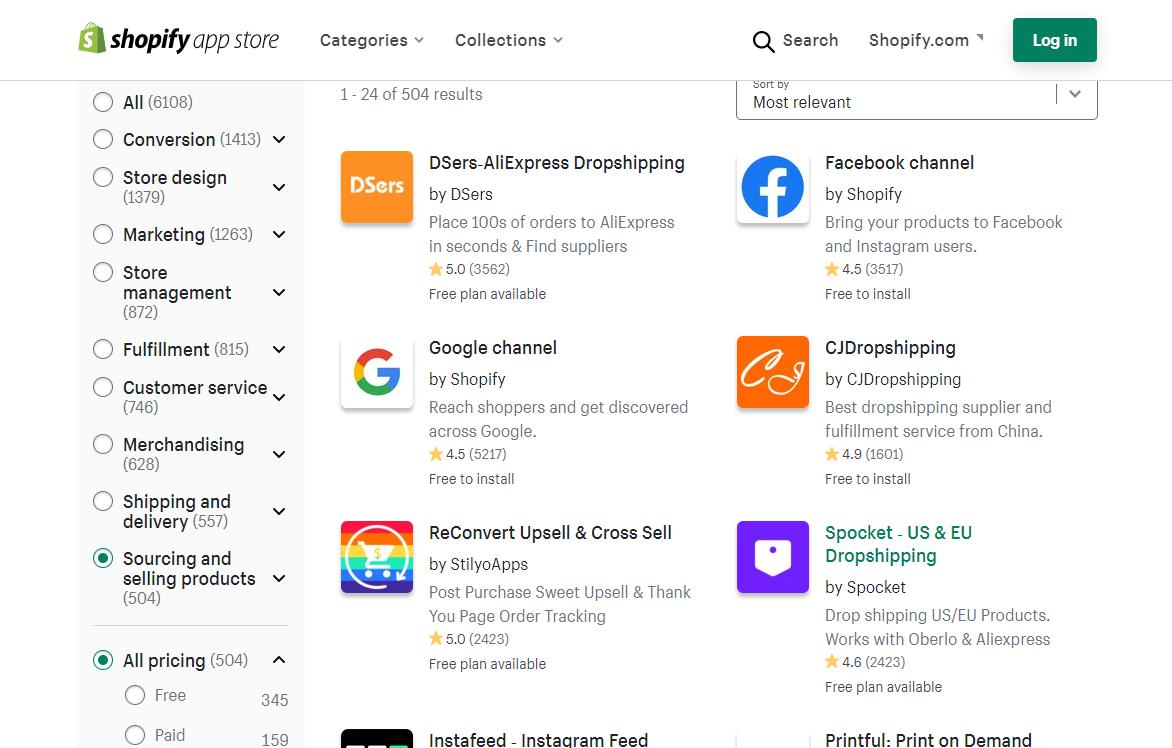 All those apps make dropshipping on Shopify easy (and even doing it from multiple suppliers at the same time). For instance, with Oberlo, you don’t only get to import products straight to your store, you can even keep the pricing feature automatic and manage them in bulk.
All those apps make dropshipping on Shopify easy (and even doing it from multiple suppliers at the same time). For instance, with Oberlo, you don’t only get to import products straight to your store, you can even keep the pricing feature automatic and manage them in bulk.
Keep in mind, however, that using any one of these apps would bump the monthly fees you need to pay. Some of them, like Oberlo, have a sort of free plan for limited orders only. Make sure to examine the apps and find out how much each app costs every month.
2. WooCommerce
WooCommerce is a free e-commerce platform built on WordPress, a website creation platform that’s one of Shopify’s fiercest competitors. It’s also the most popular website platform, firing 35% of all websites on the web.
The difference between using WordPress and WooCommerce with other platforms is that you need to use a host first. On the bright side, it doesn’t have to cost that much. For example, the personal plan in z.com only costs ₱69 per month and already includes a free domain name.
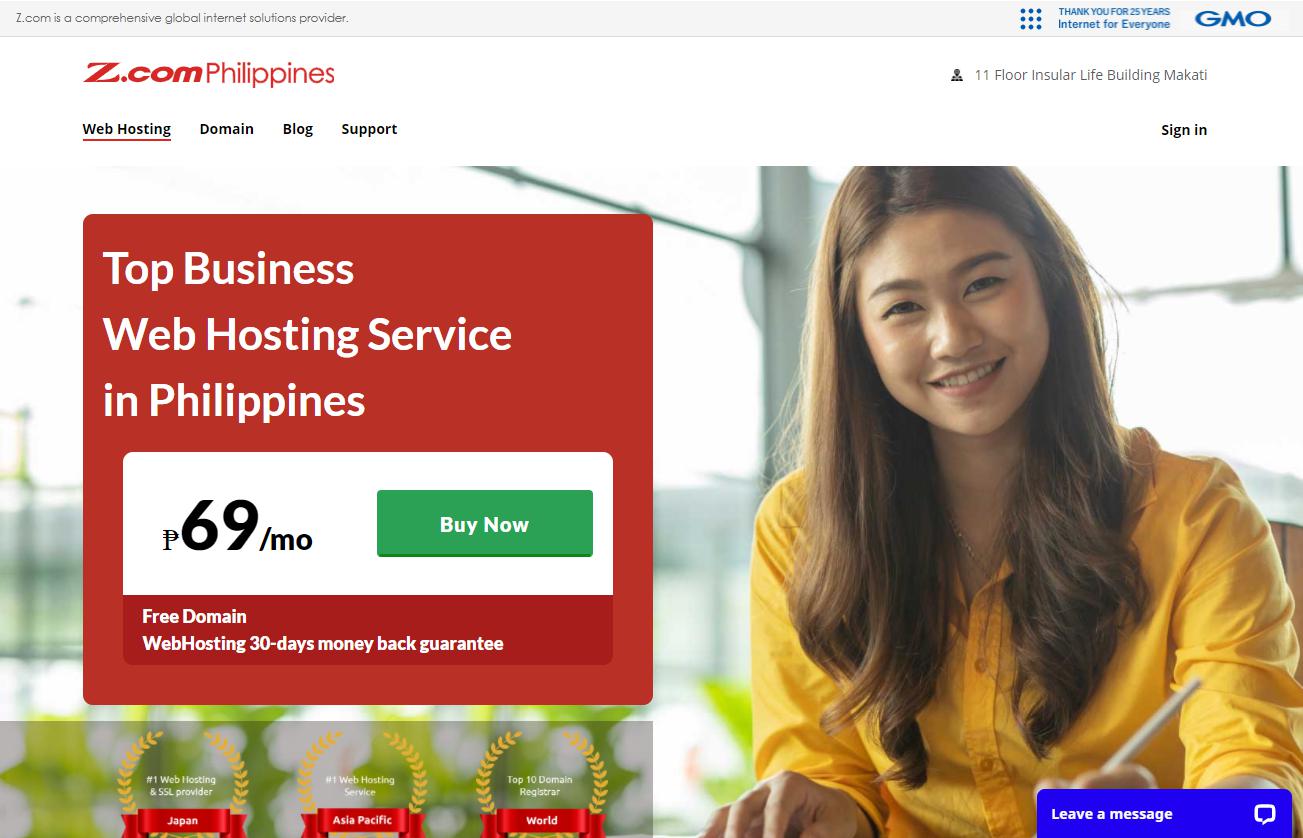 You can check out our guide on how to get started with WordPress for more information.
You can check out our guide on how to get started with WordPress for more information.
Once you already have WordPress set up, all that’s left is to create your e-commerce website. If you want to make things faster and easier, there are a lot of free e-commerce themes you can customize according to your taste.
Then, you have to actually install the WooCommerce plugin to your website.
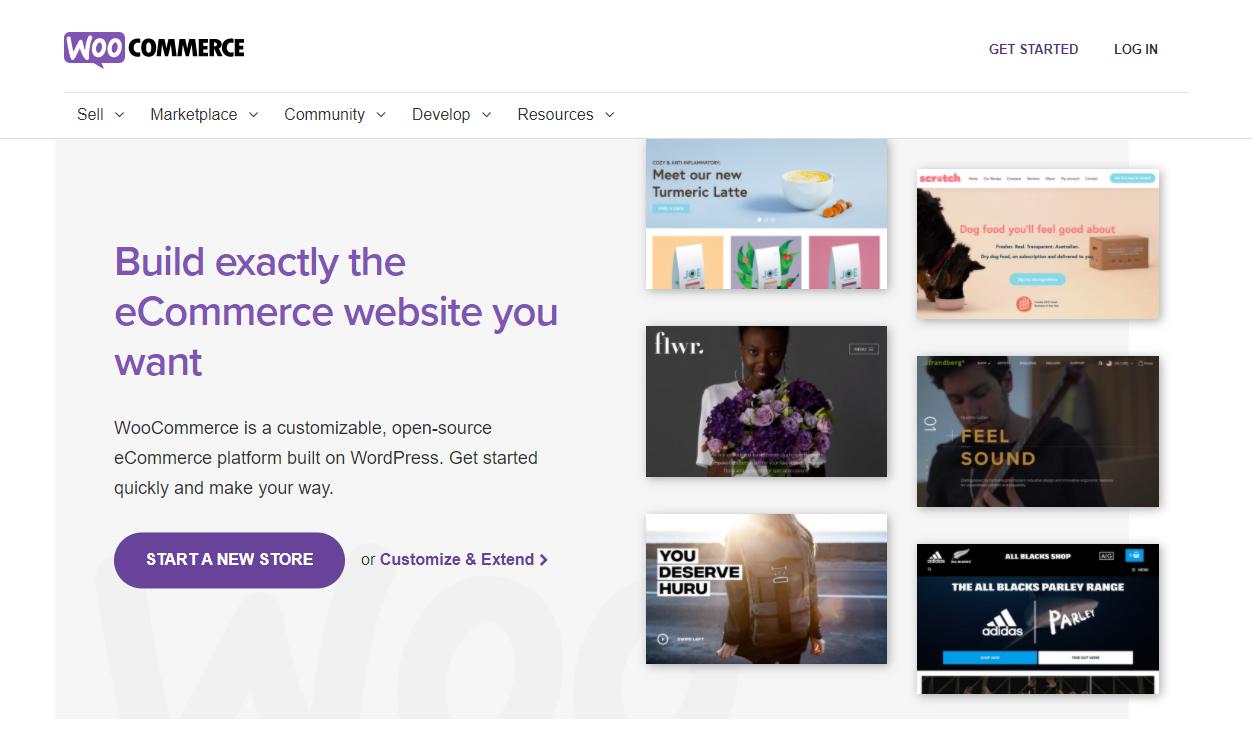
Dropshipping on WooCommerce
WordPress in itself is simply a platform for publishing websites. When you install WooCommerce, it adds a whole lot of functionalities and features that would turn a simple website into a powerful e-commerce store.
Like in Shopify, you must install extensions, which are called plugins, to make dropshipping on WooCommerce easier. Some of the top picks for the best dropshipping plugins include:
- AliDropship
- WooDropship
- DropshipMe
- Dropified
- You Droop
You can also search for more dropshipping plugins in the plugins directory, although most plugins available connect only with AliExpress.
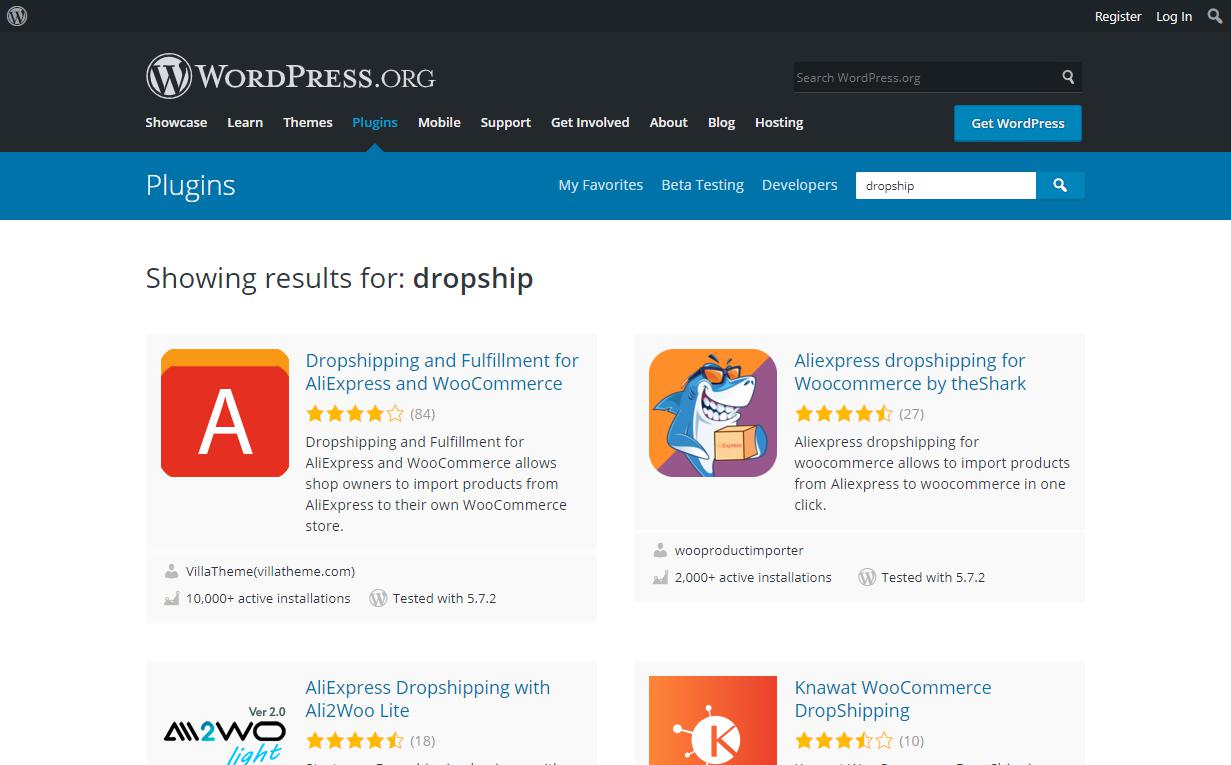 There are also plugins available that would help you in other aspects of running your dropshipping business. For example, you can install a plugin to help you with posting content on social media or adding more shipping options for your customers.
There are also plugins available that would help you in other aspects of running your dropshipping business. For example, you can install a plugin to help you with posting content on social media or adding more shipping options for your customers.
3. Lazada and Shopee
Lazada is one of the largest e-commerce websites Filipinos visit. In fact, it used to have the lion’s share in the e-commerce industry. Though not at the top anymore, it still receives more than 36 million visitors a month (according to a popular web traffic platform).
To use Lazada, you must register for a free seller’s account first and become a marketplace seller:
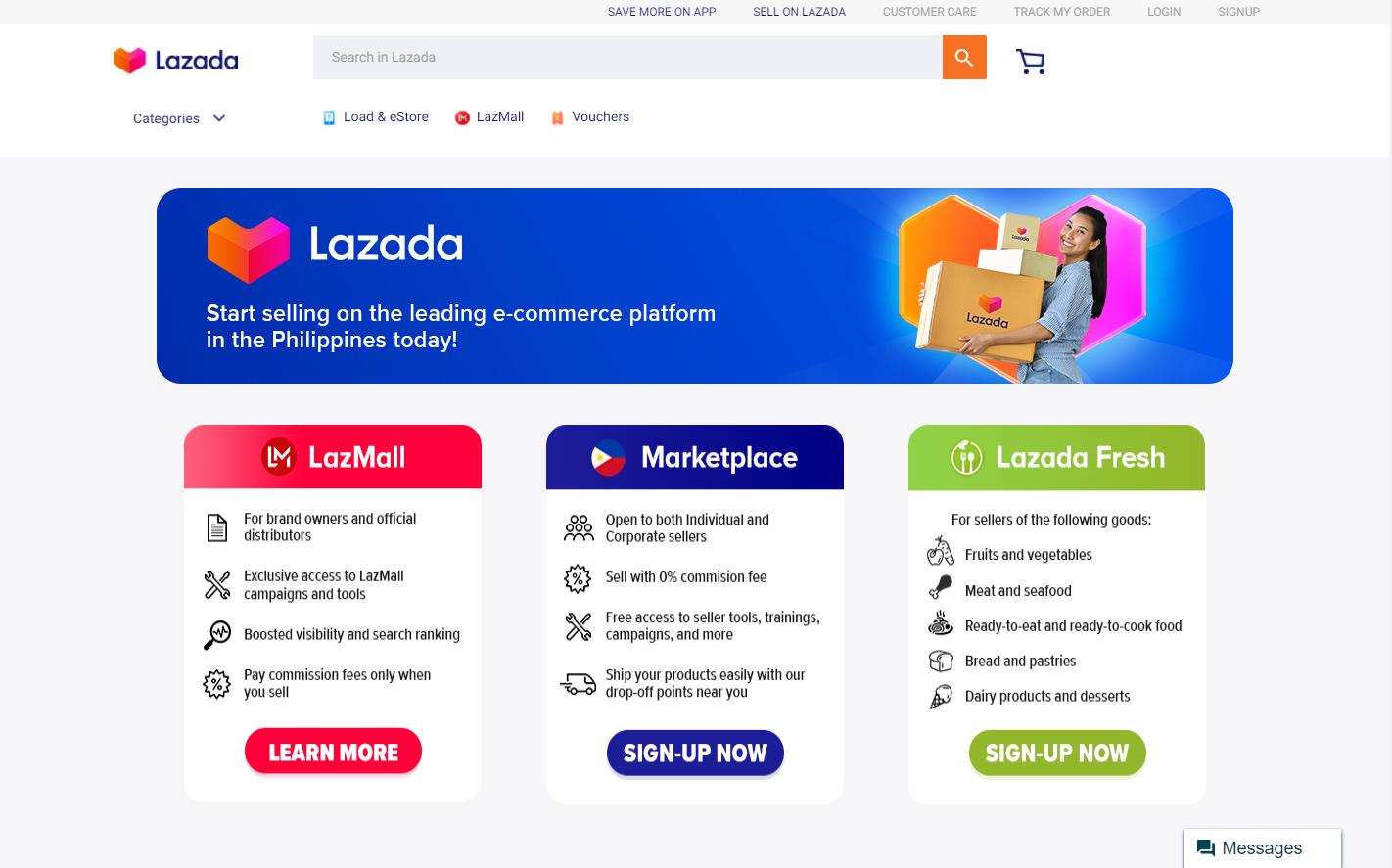 Before you can start selling on Lazada, you must provide your business information and seller requirements including the following:
Before you can start selling on Lazada, you must provide your business information and seller requirements including the following:
- Address for product shipping and returns
- Bank account information for payouts
- Valid government ID (for individual sellers)
- BIR 2303 or Certification of Registration for corporate sellers
Later on, you will have to comply with the requirements of the Online Micro Sellers Marketing Cooperative (if you’re an individual seller). It has similar requirements when registering at Lazada plus your Tax Identification Number (TIN).
You will also have to pay ₱400 as your minimum capital share requirement. The first ₱100 will automatically be deducted from the first payout while the rest must be paid within a year of signing up as a seller.
Shopee used to lag behind Lazada. But now, it’s grown to be the number one e-commerce website in the Philippines — with the largest market share — and more than 62.40 million visitors every month.
Like Lazada, Shopee is also free to register:
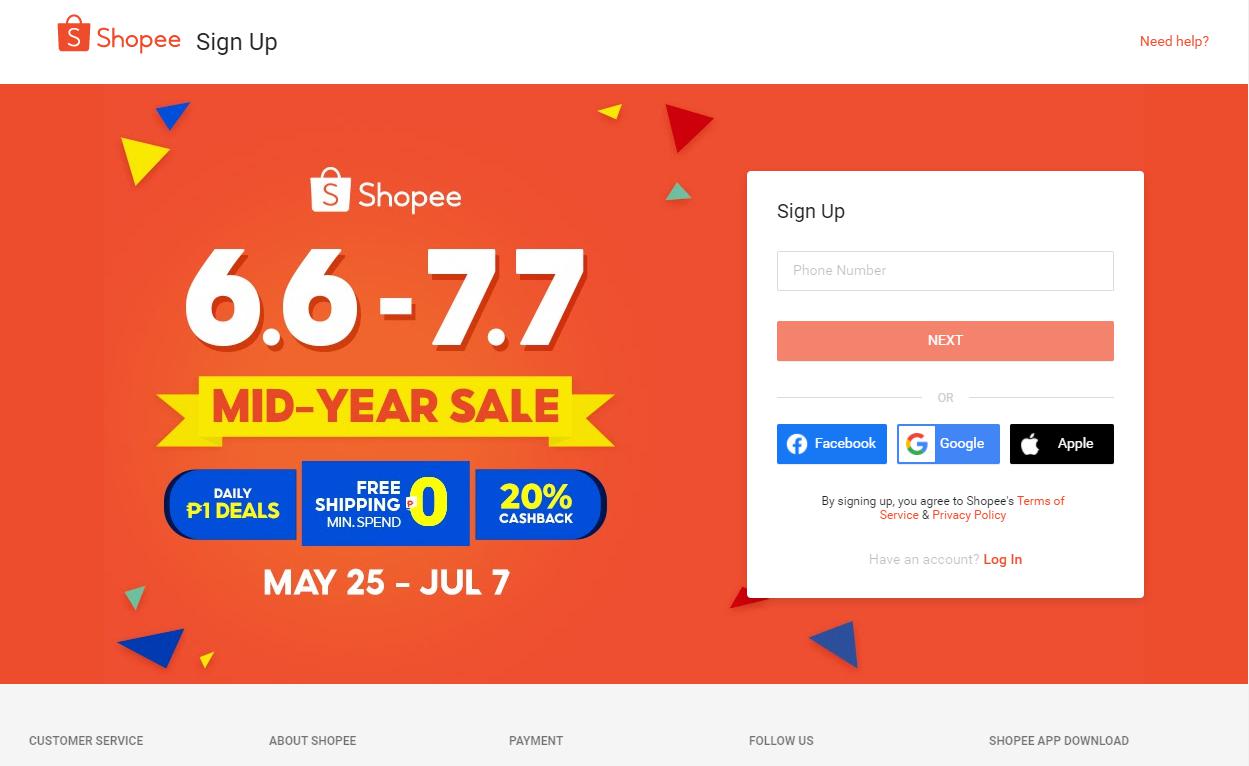 However, unlike with Lazada, becoming a seller in Shopee isn’t as complicated. In fact, everything you need to complete your seller profile is only the following:
However, unlike with Lazada, becoming a seller in Shopee isn’t as complicated. In fact, everything you need to complete your seller profile is only the following:
- Full name
- Phone number
- Address
You don’t need to show any proof of your identification or citizenship. All you need to do is add and verify your phone number and email and complete your shop profile. The reason for that is Shopee accepts cross-border sellers.
Dropshipping on Lazada and Shopee
Of the two, Lazada was the first one to become dropshipping-friendly. It took a while until Shopee permitted apps and services to connect with it to make dropshipping easier and simpler. Back then, your only choice was to do it manually (placing orders on the supplier website).
Here are the apps and services that make dropshipping easier on both Lazada and Shopee:
- Chinabrands
- Kumoten
- Dropify
Chinabrands and Kumoten work almost similarly — you integrate the app with Lazada or Shopee, find and select products to sell, and sync the products with your store and let the orders flow.
Below is a good representation from Chinabrands on how dropshipping works with the two e-commerce giants in the Philippines:
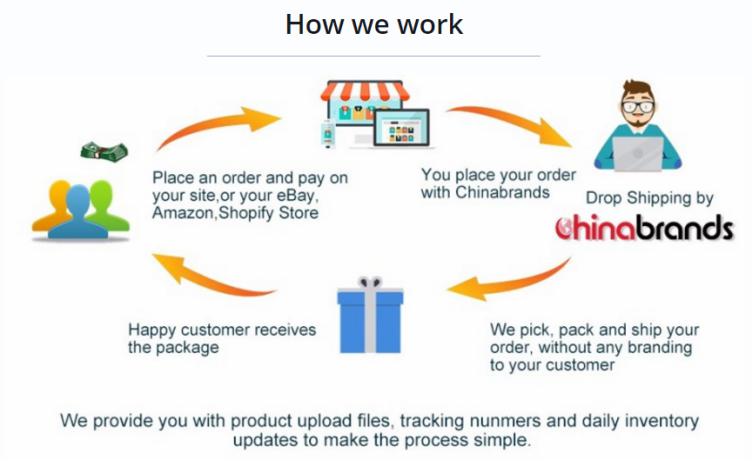 Whenever someone orders from your store, it will automatically sync with either Chinabrands or Kumoten and will place the order for you (with the customer’s details). Dropify, though a subscription-based service, works similarly in terms of order fulfillment.
Whenever someone orders from your store, it will automatically sync with either Chinabrands or Kumoten and will place the order for you (with the customer’s details). Dropify, though a subscription-based service, works similarly in terms of order fulfillment.
4. Facebook
Whether you set up a standalone page on Facebook or create a linked page for your e-commerce website, it’s important that you make use of Facebook. Undoubtedly, it’s the most popular social media network here in the country, with more than 80 million users.
Through the years, Facebook has been testing various e-commerce features. Currently, the easiest way to dropship on Facebook is to create a business page and sell your products from there.
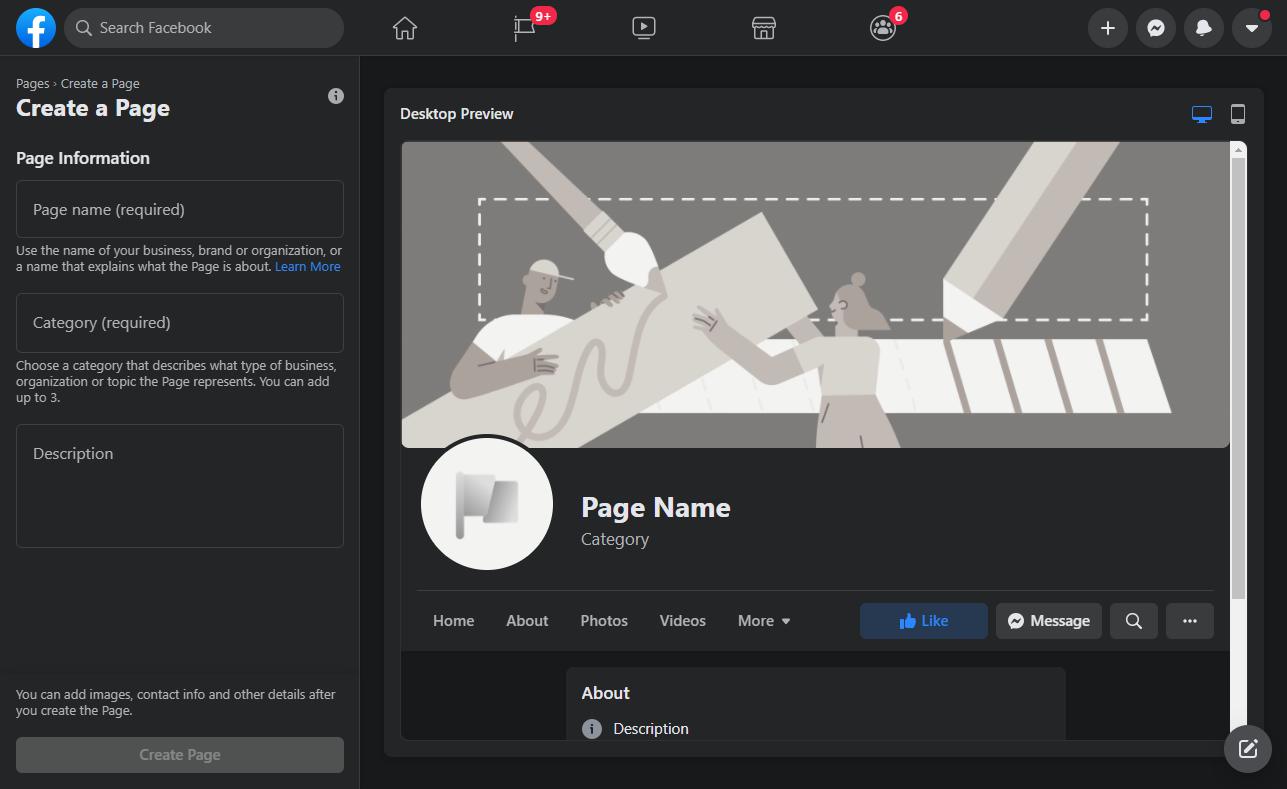 As you may know, creating a business page is free. If you already have an e-commerce store, you can use the same elements there like your logo and content, and import your products directly from your website.
As you may know, creating a business page is free. If you already have an e-commerce store, you can use the same elements there like your logo and content, and import your products directly from your website.
Dropshipping on Facebook
Unfortunately, there is no service, app, or plugin yet on Facebook that would allow you to dropship directly from Facebook. The most that you can do is sync your product listing on your business page with the listing on your website.
You can read more about importing products to Facebook from Facebook’s Business Help Center.
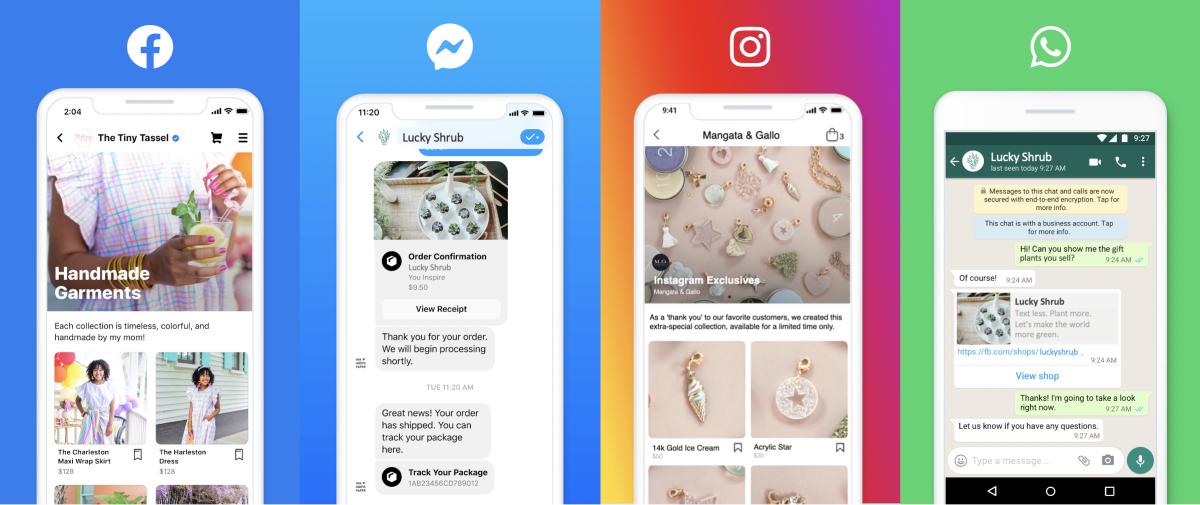 The easiest way to dropship on Facebook is to direct the traffic to your website or to your online store on Shopee or Lazada.
The easiest way to dropship on Facebook is to direct the traffic to your website or to your online store on Shopee or Lazada.
If you want to accept orders on Facebook, then you must perform the order fulfillment manually. Meaning, if your supplier is from AliExpress, then you will have to order from AliExpress and change the shipping details to that of your customer.
Take note that dropshipping tends to result in poor customer experience due to lack of control and long shipping time. This will result in a penalty in the algorithm, which favors stores with a good customer experience.
At this stage, pick one or more platforms to get started with. Consider whether or not you want to create an actual website for your e-commerce store, or simply within a large platform like Lazada, Shopee, and/or Facebook.
Chapter 5: How to market your dropshipping store?
In every business, marketing is important to build long-lasting relationships and enhance customer engagement. But with dropshipping stores, what are the ways to drive traffic to your store and where can you get them?
In this chapter, we will discuss how to market your dropshipping store effectively.
Let’s start!
How to drive traffic to your dropshipping store?
To have sales, you must have a lot of visitors to your dropshipping store. The latest surveys and studies indicate that e-commerce websites have an average conversion rate of 2.86%, which puts it roughly at around 2-3 sales per 100 visitors.
It’s also a fact that dropshipping startups vary in terms of budget. Fortunately, it’s still possible to drive traffic to your store even without spending money.
Here are some methods you can use to drive traffic to your dropshipping store:
1. Search Engine Optimization (SEO)
Basically, good SEO practices result in higher visibility. The end goal is for the website to come up first whenever a person enters a set of related keywords into a search engine. That’s why you must optimize your pages for better visibility.
It also helps to publish more content. This is the reason why many e-commerce websites and dropshipping stores start a blog as it’s the most efficient way to publish more content and rank for more keywords.
With that, here are ways you can bump the search engine optimization of your e-commerce store:
Research Related Keywords and Phrases
Keyword research is important as it helps you find terms that people use to search on search engines like Google. When you know what your target customers search for, you know what terms to use throughout your store and content.
There are many free keyword research tools that can help you including Google Keyword Planner, which you can read about in chapter two, as well as some good ones like WordStream’s Free Keyword Tool.
Let’s say you want to search for good motor accessories to dropship. Pop up the Free Keyword Tool and provide the primary term (this can be your niche) and specify the country to search on (this should be your target country).
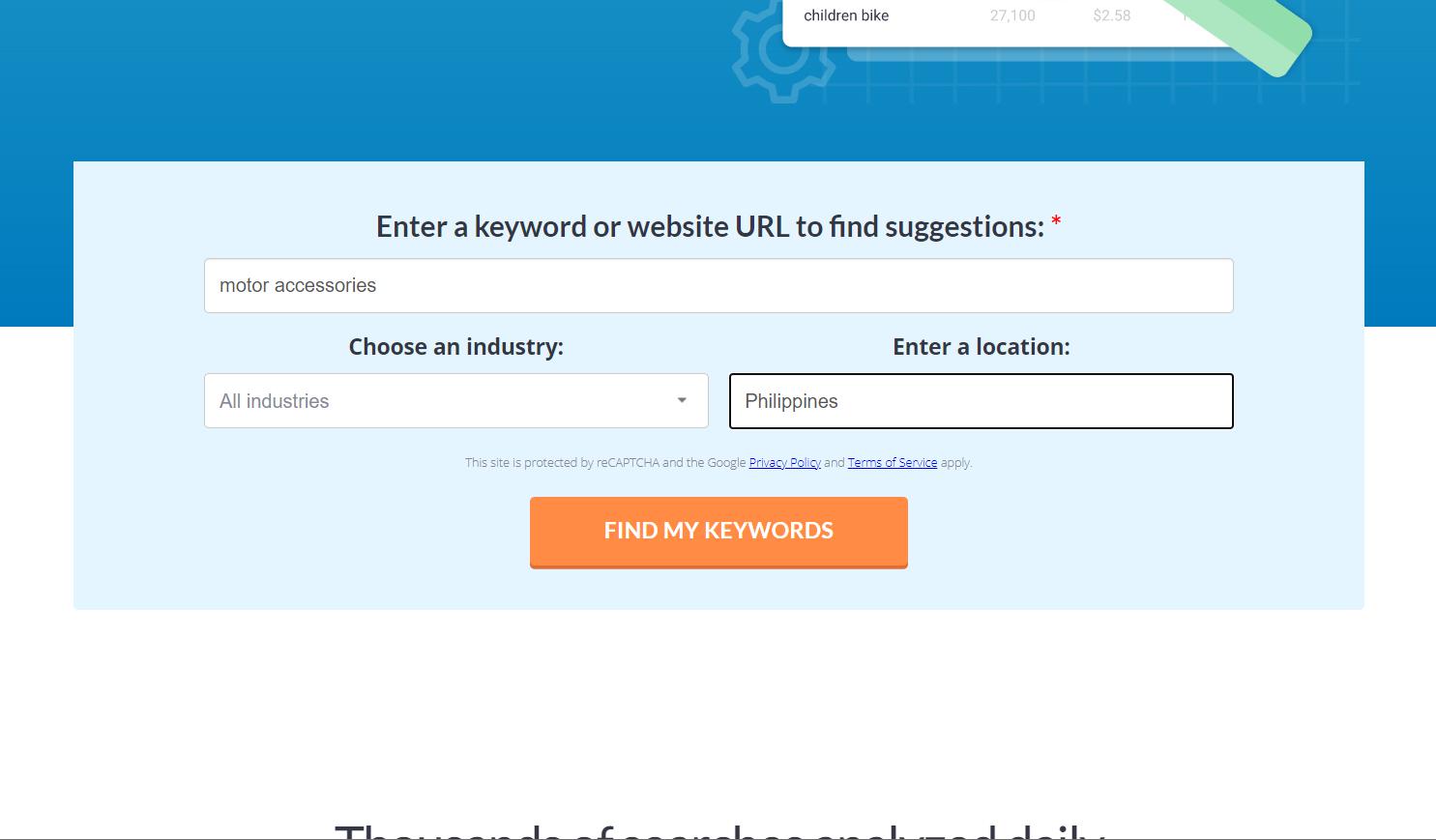 After that, WordStream will show you the related keywords and additional information on each one including the search volume, cost-per-click, and competition. You can also send the results to your email address.
After that, WordStream will show you the related keywords and additional information on each one including the search volume, cost-per-click, and competition. You can also send the results to your email address.
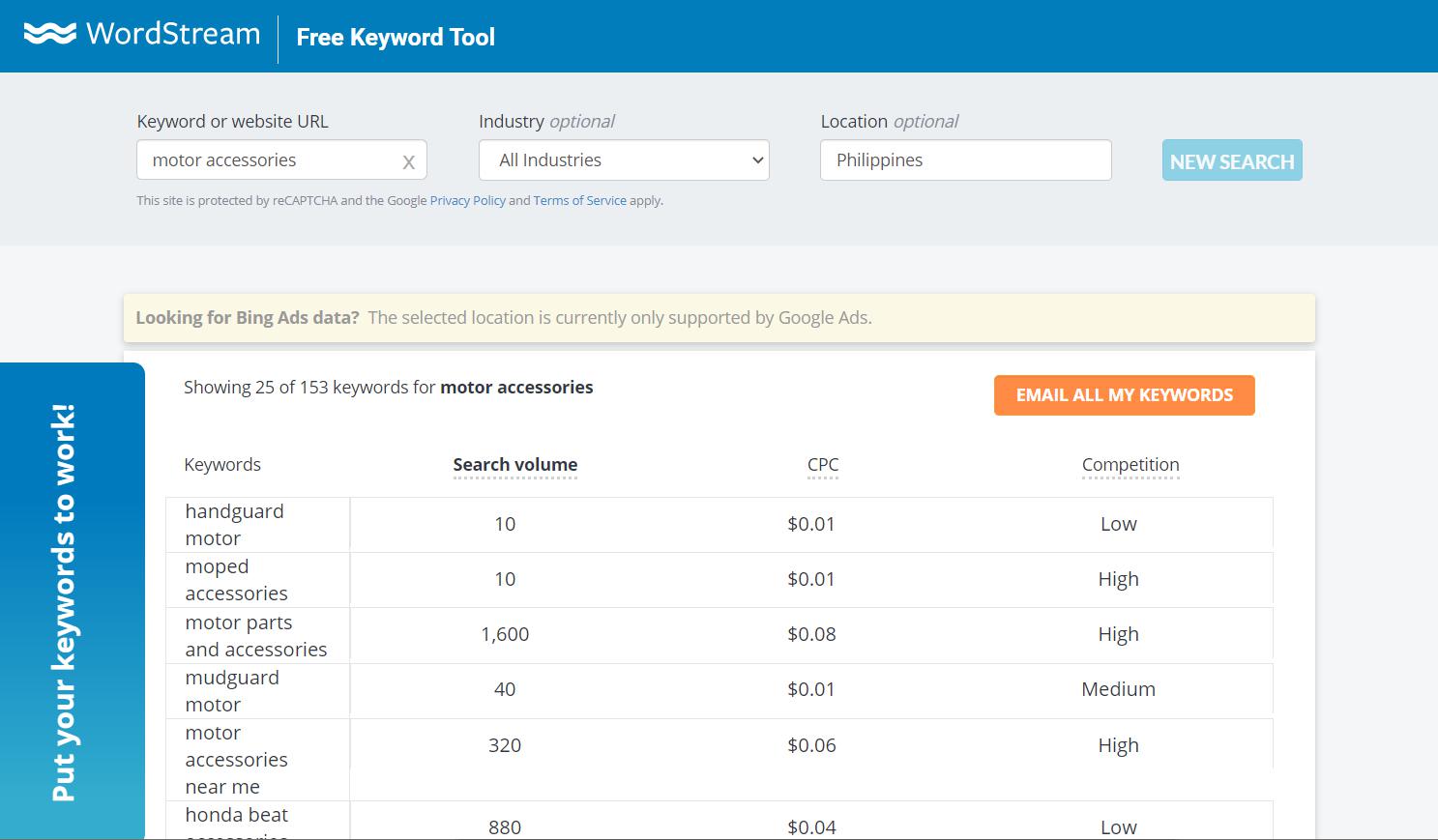 You can then see some ideas on the top products for your niche as well as what terms to use across your content. Make sure to sprinkle the right terms on your pages and blog. But avoid going overboard so Google won’t penalize and tag your website as spammy.
You can then see some ideas on the top products for your niche as well as what terms to use across your content. Make sure to sprinkle the right terms on your pages and blog. But avoid going overboard so Google won’t penalize and tag your website as spammy.
If you want more information, Backlinko has a definitive guide on keyword research.
Create Good Metadata
Metadata refers to the overview and summary of the webpage content (like the product pages and blog posts on your e-commerce store). It appears on the search engine results when the keywords match.
Primarily, metadata refers to the page title (known as meta title) and page description (or meta description).
For instance, if you search for “best motor accessories” on Google, you would see that all results have metadata that match the term:
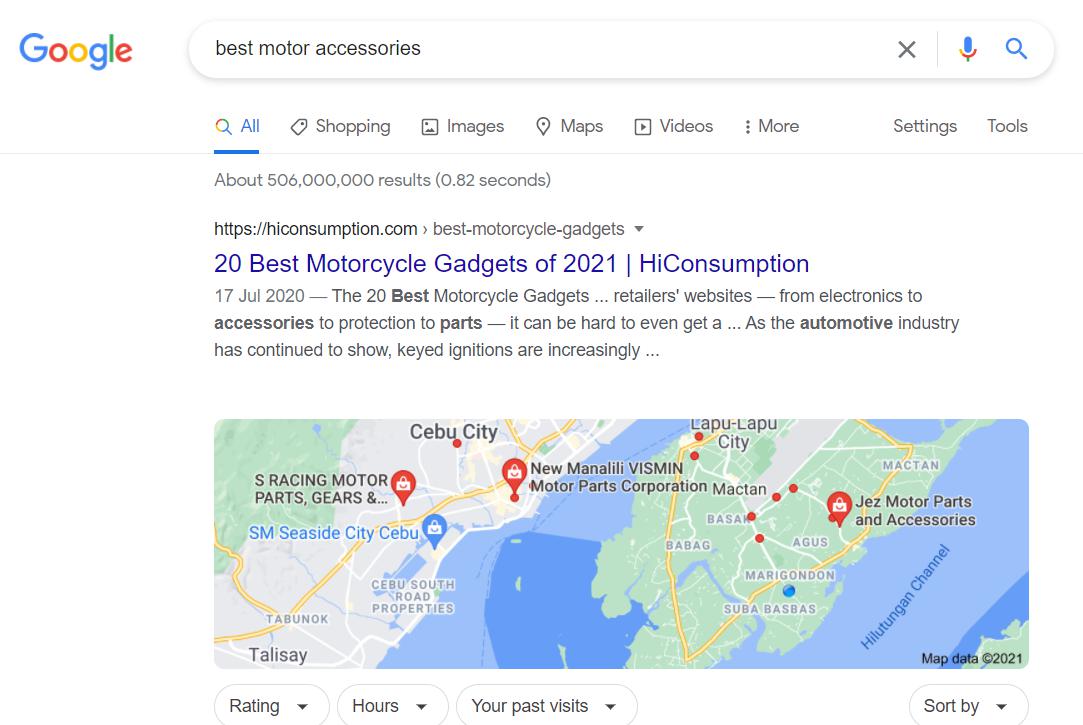 Here are good suggestions on how to create good metadata:
Here are good suggestions on how to create good metadata:
- Remember to write for humans and not search engines.
- Keep the meta title around 50 to 60 characters (the text limit that gets displayed).
- Use the meta description to encourage searchers to click through.
- Keep the metadescription around 150 to 160 characters.
- Avoid keyword stuffing on your metadata.
Build Backlinks
Link-building refers to the method of enticing other websites to link with your e-commerce store. This sends a signal to Google that your website is trustworthy and helps increase your credibility, visibility, and domain authority.
There are various ways to build links to your website. Some ideas include:
- Create a linkbait (usually in the form of good data, infographics, and exception content) and let the process progress organically.
- Reach out to websites that currently link to outdated websites and data and offer your content as a replacement.
- Guest post on other blogs and link to your content from the article.
Brian Dean, a major personality in SEO, lists out various strategies you can use to build links.
2. Organic Social Media Referrals
The results of search engine optimization could take months to take effect. In the short term, it’s ideal to implement a tactic that would still drive traffic to your website without having to spend anything.
Organic social media referrals are a good way to reinforce trust and build a relationship with your target customers.
Here are suggestions on how to drive social media referrals to your e-commerce store:
Share Social Videos to Drive Traffic and Engagement
Sharing fun, relevant, and engaging videos is a popular way to gain followers on social media and hold their attention. Another benefit is that it has been proven that videos, particularly those related to a product, increase the conversion rate of visitors.
The good side with this is that you don’t have to create the social videos yourself. You can search for related videos on your social network of choice and share them on your page or account. Then, sprinkle some copywriting tactics on the caption.
Below is a good example of a bike parts video that garnered a lot of engagement and drove a lot of traffic:
 When sharing or creating a video on social media, follow some of these tips to drive traffic and engagement:
When sharing or creating a video on social media, follow some of these tips to drive traffic and engagement:
- Make sure to have a decent video resolution.
- Add subtitles to optimize your videos for the newsfeed.
- Consider using a square format on your videos to occupy more space on mobile.
- Encourage the viewers to engage with your video and leave a like or comment.
Lumen5 has outlined some strategies you can follow to garner more views on your video.
Create a Quality Content Marketing Strategy
To effectively make use of social media (like Facebook), you need to be consistent. This is why you need a quality content marketing strategy. You simply can’t be posting every day this week and be silent the next week.
The key here is to make sure your page doesn’t appear to simply be a money-making machine.
Here are some suggestions on how to make an effective content marketing strategy on social media:
- Make use of stories that could stir the emotions of your target customers.
- Curate and create timely posts according to current events and trends.
- Consider showing the human side of your dropshipping business.
If you want to make things easier, you can use social media marketing tools like Hootsuite or Buffer to automate your posting schedule.
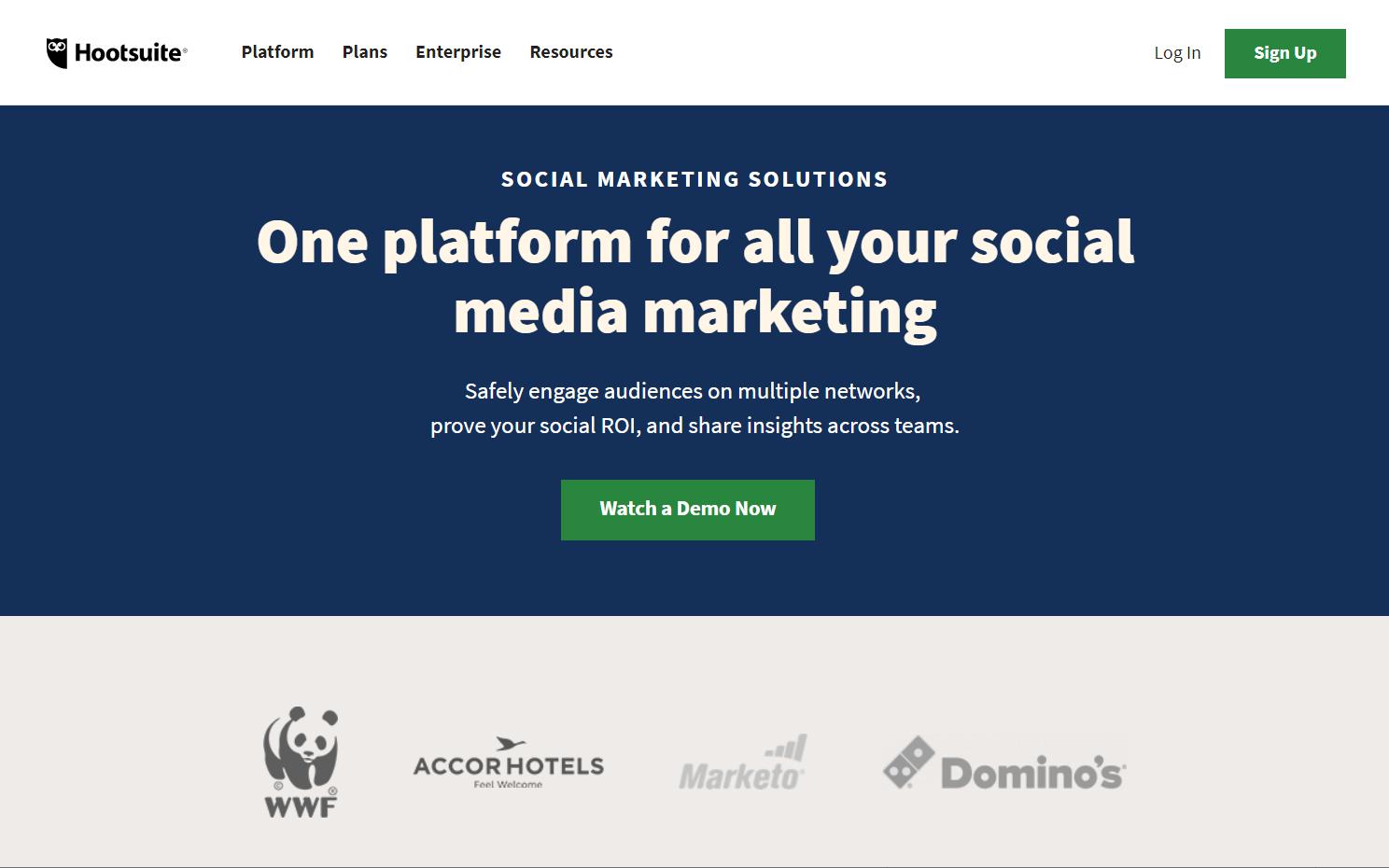 Check out Sprout Social’s post on creating a quality content marketing strategy to drive organic social media referrals to your dropshipping store.
Check out Sprout Social’s post on creating a quality content marketing strategy to drive organic social media referrals to your dropshipping store.
3. Advertise on Google and Social Media
The first two methods to drive traffic to your e-commerce store don’t require you to shell out cash (unless you want to make use of tools and software to make the work easier). Unfortunately, both methods may take a while before you can garner substantial traffic.
Here is a basic comparison of the three platforms you can use to effectively run ads for your dropshipping business in the Philippines:
| Platform | Suitability | Ad Formats |
| For those who want to use creativity, style, and branding by targeting the interests and hobbies | Image, video, stories, carousel, and collection | |
| For those who want to use aesthetic visual content (high-quality images and videos) | Video, image, story, carousel, reels, and IGTV | |
| For those who want to make use of high-search intent in the search engine | Text, responsive, image, app promotion, video, product shopping, call-only |
If you want an advertising tool that helps you reach your ideal customers with creativity and style, then Facebook is definitely the best for you.
 Its diverse ad formats allow you to run ads that are reflective of your brand’s artistry and image. It optimizes ad delivery by targeting users whose interests and hobbies are in line with your products.
Its diverse ad formats allow you to run ads that are reflective of your brand’s artistry and image. It optimizes ad delivery by targeting users whose interests and hobbies are in line with your products.
Moreover, when you choose to use paid ads from your Facebook page, your brand exposure increases and your number of followers may grow.
Facebook uses four ad formats — image, video, stories, carousel, and collection. So if you want to focus on push marketing and entertainment-related e-commerce, go with Facebook.
When advertising with Facebook, remember to use:
- Vertical videos. Make your ads convenient for those who are using their mobile phones.
- Images with less than 20% text. On Facebook, images perform better with little or no text.
- Call-to-action buttons to encourage your audience to engage with your brand and take action.
Another option for businesses who want to go for push marketing would be Instagram. As it is now integrated with Facebook, it utilizes the latter’s demographic data to distribute ads to its appropriate viewers.
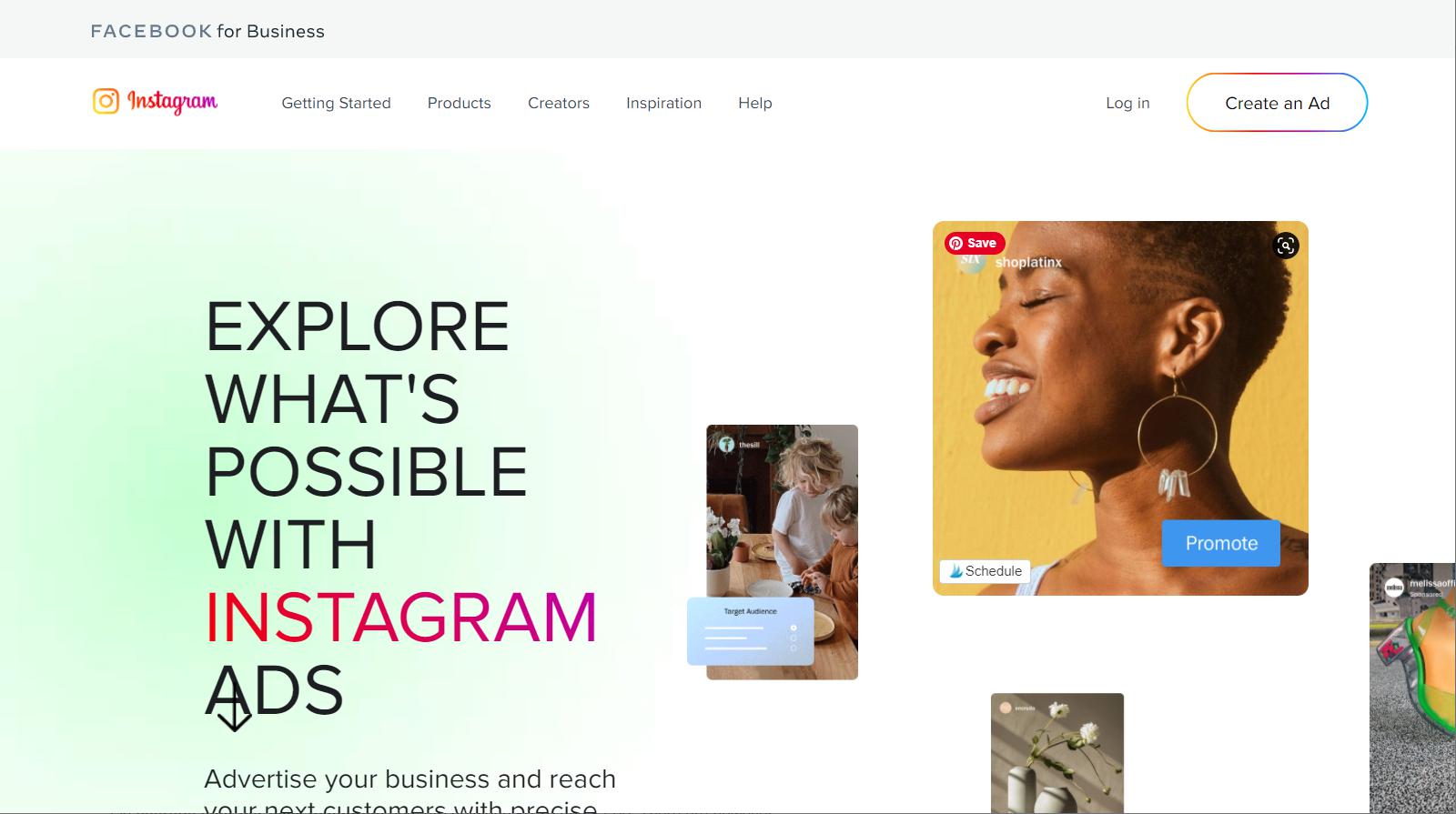 Although Instagram is more on photos, it also offers other seamless ad formats. Just like Facebook, you can advertise your brand through video ads, story ads, carousel ads, explore ads, and IGTV.
Although Instagram is more on photos, it also offers other seamless ad formats. Just like Facebook, you can advertise your brand through video ads, story ads, carousel ads, explore ads, and IGTV.
Considering how this platform focuses on aesthetic visual content, it would be nice to use high-quality videos and images for your posts. That being said, Instagram ads are suitable for youngsters who want to see beautiful photos and stories.
Below are other things you need to remember when making Instagram ads:
- Use eye-catching thumbnails. They instantly capture attention.
- Keep your videos short. The platform’s limit for videos is at 60 seconds, so be sure to fit your message in that span of time as people’s attention spans are short.
- Use relevant hashtags and keywords.
- Curate your feed and be consistent with your chosen themes or color schemes. Your Instagram profile serves as your page so all of your posts must be presented beautifully.
- Make compelling captions, especially those that evoke an emotional response.
- Include a call to action (CTA) to encourage engagement.
Google Ads
While the first two platforms are more on push marketing, Google ads focus more on pull marketing. Meaning, it attracts customers to a brand via SEO and non-intrusive methods, so it is best for businesses with high search intent.
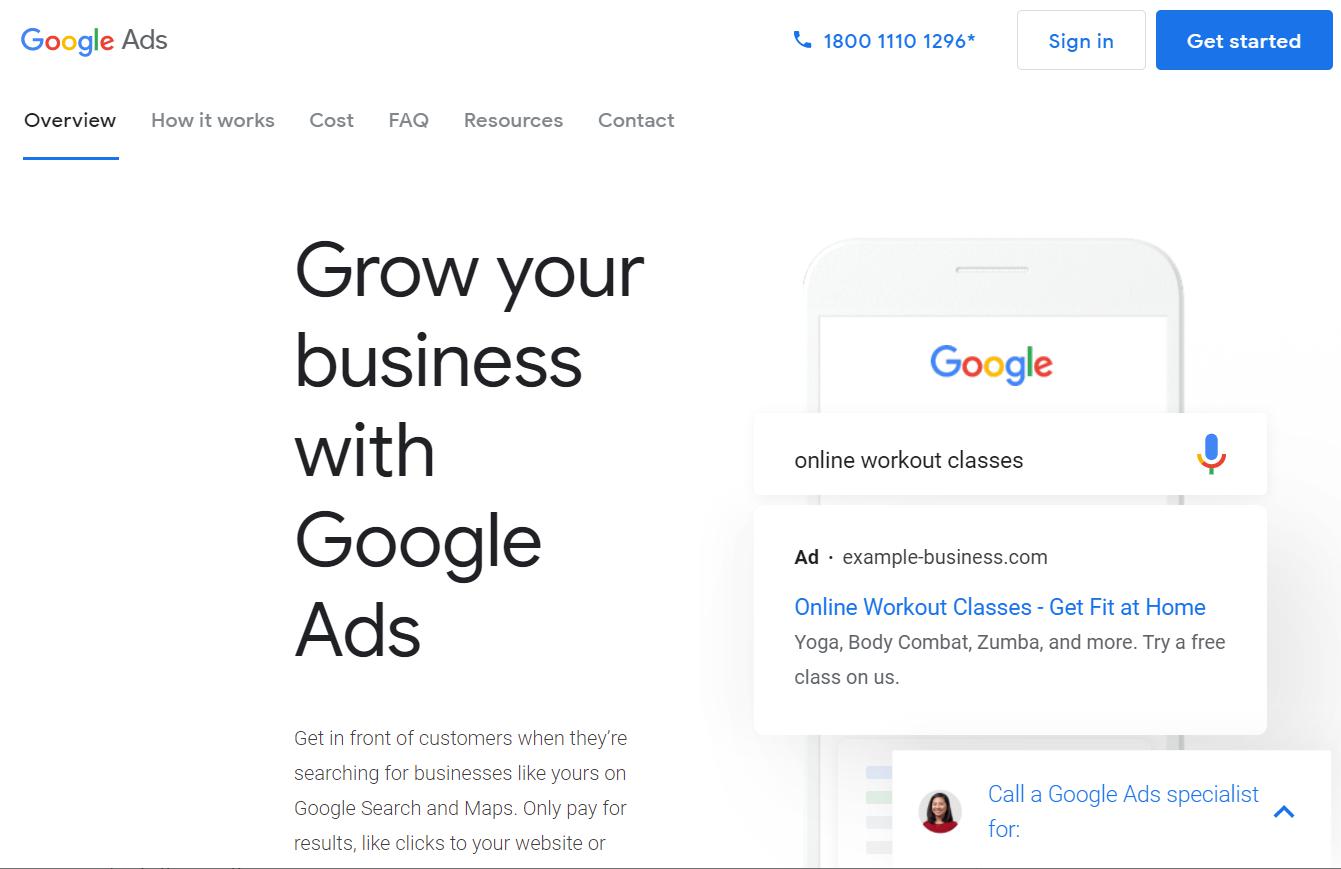 Google offers a lot of ad formats that you can use for your business.
Google offers a lot of ad formats that you can use for your business.
Search campaigns, known as text ads on search results, show your brand once people start looking for the products that you offer. Image ads, on the other hand, appear when users browse through various apps and sites.
Video campaigns mostly appear on youtube, while shopping ads are displayed on the Google shopping tab as well as on search results.
Google also has local campaigns — but they’re more useful to those with a brick-and-mortar store.
If you want to advertise your products using Google Ads, here are some points to keep in mind:
- Be focused and specific with your ads to make them relevant in targeting audiences.
- Use simple, everyday language because Google prioritizes ads written in natural language.
- Create engaging ads that are both mobile and desktop-friendly. Most users are using their mobile phones when browsing the internet, but you also want your ad to look good even when being viewed through one’s desktop.
- Include a functional and user-friendly landing page to drive traffic and user engagement.
- Use negative keywords so you can refine your audience and target only those who are likely to convert.
- Measure the results of your ad performance to create improvements if necessary.
Aside from the methods mentioned above, there are still plenty of ways to market your dropshipping store. However, optimizing your store for the search engines, using organic social media referrals, and running ads on social networks and Google are great ways to start.
Chapter 6: What legal responsibilities do you need to comply with when starting a dropshipping business in the Philippines?
Even if all the transactions in your dropshipping business are done online, you still have to comply with your legal responsibilities — registering your business and paying taxes. In this chapter, you will learn what you need to do in terms of legal compliance.
How to register your dropshipping business with the Bureau of Internal Revenue?
The first step towards registering your business is by registering your business name at the Department of Trade and Industry. For this matter, you can head over to DTI’s Business Name Registration System.
The reason is, you may need it for filing a registration at BIR. Currently, there is no way to register your business online on BIR’s website, so any registration must take place at any of their offices near your area.
You may be required to submit the following documentation:
- DTI Certificate of Registration (if applicable)
- Occupational Tax Receipt or Professional Tax Receipt from City Hall or Municipal Hall (if applicable)
- Barangay Clearance
- Proof of Address, e.g. Lease Contract or Land Title Certificate
- Valid identification
Note that you need to prepare at least ₱500 for the registration, which can be paid via an authorized agent bank. After that, the BIR will issue you a certificate of registration, a banner asking for receipts, and a stamp on your books of accounts.
What are the standard taxes you need to pay for your dropshipping business?
The certification of registration that the BIR issued will confirm the type of taxes you need to pay. More likely, you will need to pay similar standard taxes to what physical businesses pay. Tax laws here in the country have no distinction whether the marketing channel is online or not.
With that, here are some of the taxes that you may have to pay:
- Monthly and quarterly value-added tax that’s required for all businesses earning more than ₱3 million in a taxable year
- Quarterly percentage tax for businesses earning ₱3 million or less per year and not subject to VAT
- Withholding tax on compensation
- Expanded withholding tax/creditable withholding tax
- Quarterly and annual income tax returns
Note that the above section is for general information purposes only. Anything mentioned earlier doesn’t constitute or intend to advise anyone on financial, accounting, legal, and regulatory matters. It’s not a replacement for professional advice.
There are a lot of firms you can approach in the Philippines both in-person and online. For one, you can try and consult the professionals at Taxumo and even avail of their services and let them handle the legal and tax responsibilities of your dropshipping business.
Chapter 7: Frequently Asked Questions Regarding Dropshipping in the Philippines
Now that you have reached the end of this guide, you may still have some questions with regards to starting a dropshipping business in the Philippines. What this chapter aims to do is address the most frequently asked questions you may have.
How much capital do you need to start a dropshipping business in the Philippines?
Dropshipping is definitely one of the online businesses you can start without shelling out a lot of cash. That’s because you don’t need to own any of the stocks before you can sell them. It’s almost similar to retailing business without actually buying the products to sell first.
From the information in the previous chapters, you can derive that the capital you need to start a dropshipping business depends on the platforms, suppliers, and extensions or plugins you want to use.
Below are examples of scenarios and how much capital you would need:
- If you create a store with Shopee and tap Chinabrands as your supplier would basically cost you nothing.
- If you use Lazada with suppliers that don’t require a membership fee, then all you need to pay is the ₱400 for the minimum capital share requirement.
- If you use Shopify and Oberlo, you will need to prepare ₱1,400 a month for Shopify and ₱360 for the domain. You may not basically need to pay for Oberlo right away if the orders you receive are below 500 per month.
- If you create a WooCommerce store and use the AliDropship plugin, then you need ₱4,269 (₱4,200 for the plugin and ₱69 per month for the hosting and domain with z.com).
In short, the minimum capital you need is zero if you make use of Shopee and Chinabrands. If you want to go all out, you need at least a few thousand pesos for the setup and the marketing tactics you need to run.
Is dropshipping still profitable in the Philippines?
Dropshipping may not be as mature compared to western countries. However, the fact remains that with the right niche, products, customer service, marketing tactics, and enough effort, you could earn profit from dropshipping in the Philippines.
In terms of numbers, Statista shows that revenue in e-commerce marketing (in the Philippines) is projected to reach more than $4 million in 2021. In addition, around 56% of customers visit an online store at least once every 30 days.
However, do note as with every business, you will encounter failure and obstacle along your way. If you are willing to work hard, this guide will help you in your dropshipping journey.
Can you start a dropshipping business without a website?
Absolutely! You can set up a dropshipping business by only using Lazada, Shopee, and Facebook. These platforms don’t cost that much (mostly free) though the actual process of managing the business may be a bit tedious.
If you have enough capital, it’s best if you set up your own e-commerce dropshipping store or website (either through Shopify or WooCommerce). With that, you actually own the platform itself.
Do you need to pay taxes while dropshipping?
The tax laws in the Philippines don’t have a distinction between what marketing channel was used to earn the sale. Meaning, whether it’s an online business with all-online transactions or a brick-and-mortar store, you need to pay taxes.
It may be tempting to avoid the taxation part. However, it’s best if you comply with it as early as you can to avoid further complications (and punishments) in the future. Even if you’re not making much, it’s still important to file your taxes.
Besides, you won’t be paying anything if you’re not earning any income. You just have to file your taxes and specify your income and expenses. To avoid confusion, contact a professional and ask for clarifications about business registration and taxation.
Start Your Dropshipping Business Today
Dropshipping is a great online business and income-generating activity that you can start without needing a large sum of capital. There are a lot of platforms, tools, and extensions out there that would help you set up everything.
Take note, however, that dropshipping is not a get-rich-quick scheme. Like any business, it’s not as easy as it seems. But with enough perseverance, it will happen.
Start building your online dropshipping store today.
PROMO
FREE Web Hosting
for Your Website


